The 100 Best Vampire Movies of All Time
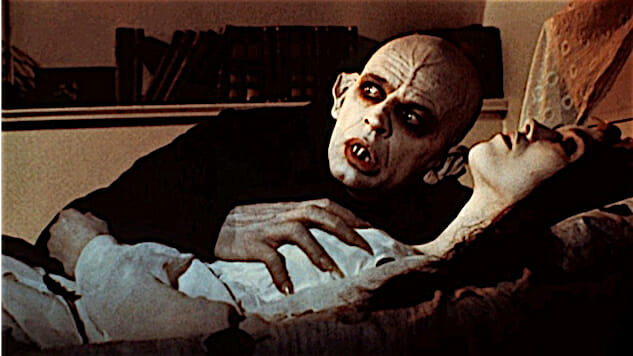
Existing in some form or another for thousands of years, these blood-sucking creatures serve as one of horror’s most creatively flexible monsters. Besides ghoulish monsters, vampires can be charmers, warriors, sex symbols, sources of comedy, nihilistic philosophers and aliens. Though mostly confined to horror, vampires also bleed their way into everything from slapstick comedy to award-winning dramas. Oftentimes, these seemingly villainous predators can even serve as sympathetic protagonists or badass antiheroes. Moreover, vampirism itself has stood in as a natural metaphor for a great number of motifs—drug or alcohol addiction, sex, racism, xenophobia, religion, economic disparity and mental illness, to name just a few. It’s no wonder we have so many vampire movies.
Popularized in folklore and books, the vampire was a natural fit for the silver screen. Today, Paste is counting down the 100 greatest vampire films that cinema has to offer. First—a few caveats. One, unlike Paste’s previous lists numbering film noirs) or cinematic robots, there are far fewer vampire movies that one could classify as being truly “Great.” This scarcity of quality means that some of the earlier entries might be more problematic than those in the latter segment. In such cases, we have ensured that each installment has something of worth to offer viewers, whether it’s a great visual style, a clever story twist, a standout performance or production design so laughably strange and half-baked that it veers into “so bad, it’s good” territory. The Paste writers have also strived to curate a diverse selection of choices. Granted, filmmakers like Mario Bava and institutions like England’s Hammer Film Productions will be making multiple appearances, but we’ve worked to bring in variety whenever possibly.
What’s more, though erotic horror is obviously a popular vampire subgenre, it’s one that we weren’t able to fully dive into without feeling as though we needed to have our souls cleansed afterwards. So if we’ve overlooked your favorite lesbian vampire erotica, we apologize in advance.
Finally—no, none of the Twilight or Underworld films are on this list. (A stand had to be made.)
Here are the 100 best vampire movies of all time:
100. The Satanic Rites of Dracula (1973)Director: Alan Gibson
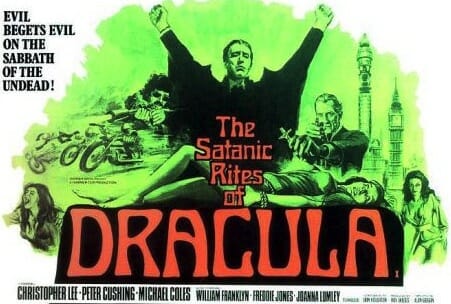
The sixth sequel to Hammer’s Horror of Dracula is blessedly the final movie in the series to feature poor, reluctant Christopher Lee in the role, and also brings back Peter Cushing as Van Helsing once again … although he seems to be a different Van Helsing? It’s honestly difficult to tell, and that about sums up The Satanic Rites of Dracula in general—it’s the craziest and most incoherent of the series, and this is presumably what Lee was talking about when he said, “the qualities of the scripts deteriorated, and the demands made on me were virtually nil. All I was asked to do was sort of stand around, and do things occasionally. I lost interest, and I’m sure the public did.” The film is like a “movie loaf,” with unrelated bits clipped together; part spy movie, part science fiction and part gothic horror. Dracula actually plans to wipe out the entire human race this time by creating and unleashing some kind of doomsday plague, which is a pretty big change in MO. Who’s he even going to feed on if all the humans are dead? The movie just feels slapdash compared to some of the earlier examples, and it’s not surprising that it’s since slipped into the public domain.—Jim Vorel
99. Dracula A.D. 1972 (1972)Director: Alan Gibson

It’s unlikely that any of the Hammer Dracula series fans saw this one coming. The fifth sequel to Horror of Dracula unexpectedly thrusts the time period forward all the way to “present day” 1972, in a decision that can only be described as equal parts goofy and uncomfortable—Christopher Lee himself called it “ludicrous.” Honest-to-god, most of the first 30 minutes feel like a teen musical comedy of the era, with rooms full of dancing kids, funk music and gigantic afros before, hey, wasn’t Dracula in this movie? The upside is that Peter Cushing is unexpectedly back as Van Helsing, a descendant of the original Van Helsing who is still running on a pretty strong anti-Dracula platform. It really feels like Hammer couldn’t quite decide what the hell the film’s tone was supposed to be—sometimes we’re tooling around in the vibrant, funky London of 1972, and yet Dracula’s abode is still a completely gothic-looking castle that instantly makes you forget the “modern” setting. We get multiple Dracula vs. Van Helsing confrontations, but they’re somewhat watered down from their first battle some 14 years earlier. At least Dracula gets an excellent death scene in this one. —Jim Vorel
98. Taste the Blood of Dracula (1970)Director: Peter Sasdy
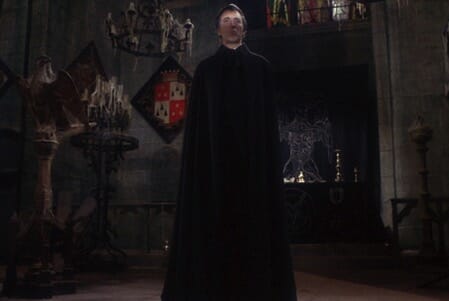
The third Hammer Dracula sequel is where things begin to go off the rails in this series. The vampire’s resurrection is especially convoluted this time—after being reduced to ashes, his remains have been kept hidden away by a shopkeep. They’re acquired by a weird club of bored, foppish aristocrats/hedonists who go out drinking and slumming in brothels every night in an effort to keep themselves entertained. These guys decide that it would be fun to resurrect Dracula on a lark, and purchase his remains. Suffice to say, it doesn’t turn out well for them, as the returning vampire then hunts them all down for no apparent reason. As in previous entries in the series, Christopher Lee is the best thing in it, although once again he has almost no lines and his participation feels pretty rote. Some of the atmosphere and sets are still nice in this entry, but the most egregious offense is how easily Dracula is eventually destroyed. I won’t spoil it, but it’s a big let-down seeing the Prince of Darkness dispatched in this way. Perhaps this is why the next Hammer Dracula film, Scars of Dracula, was released a mere six months later. —Jim Vorel
97. Blood and Roses (1960)Director: Roger Vadim
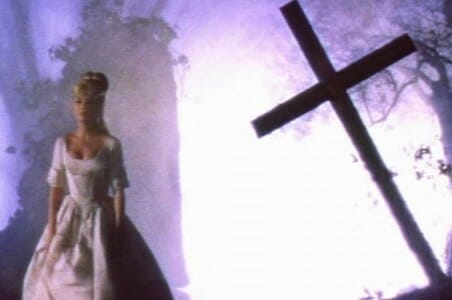
This being a Roger Vadim production, Blood and Roses appears to exist primarily as a lurid vehicle for the director’s actress wife Annette Stroyberg (though the two would officially divorce that same year). Stroyberg plays a young woman who, jealous over the engagement of a friend to her beloved cousin, seemingly becomes possessed by the spirit of a murderous vampire. To Vadim’s credit, the resulting film doesn’t feel quite as blatantly exploitative as some of his previous ventures and, along with an appropriately Gothic feel, there’s a somewhat legitimate sense of poignancy and tragedy to the storyline. It’s the type of erotic horror tale that plays to its strengths and is all the better for it. —Mark Rozeman
96. Subspecies (1991)Director: Ted Nicolaou
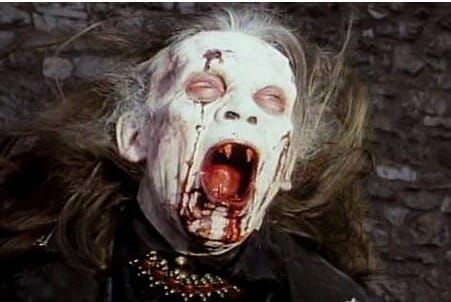
The Subspecies series is to vampires what, let’s say, The Howling is to werewolves, except without all of The Howling’s dignity and talent. Essentially a series of family scuffles between a big vampire clan that the poor human characters keep getting sucked into, the first entry in the series introduces us to vampire antihero/villain Radu, whose inconsistently spindly fingers evoke Count Orlok of Nosferatu in a way that says, “Hey, at least we’re trying, right?” The film was made by Full Moon Studios as one of the flagship series produced by still-prolific B-movie maven Charles Band, a producer who has ably played a Roger Corman-type role in straight-to-video horror ever since the late ’80s. It features many of the studio’s trademarks—gallingly cheap-looking but charming stop-motion animation creatures, nudity and plenty of magical mumbo-jumbo. This is exactly the sort of film you would have seen on the shelves of Blockbuster Video locations nationwide in 1993, consistently rented by horror hounds with low standards and a desire for titillation in a pre-internet age. —Jim Vorel
95. Kiss of the Damned (2013)Director: Xan Cassavetes
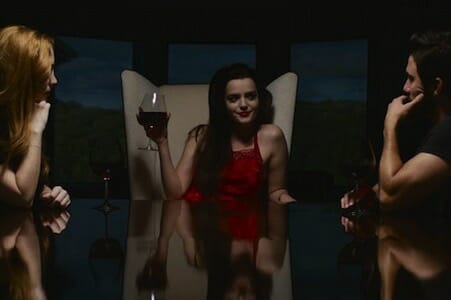
Xan Cassavetes’ long-awaited follow-up to her excellent 2004 documentary, Z Channel: A Magnificent Obsession proved to be a sort of throwback to the garish, sensual European vampire films of the 1970s. The plot centers on a screenwriter who becomes enraptured by a beautiful woman who turns out to be vampire. After she turns him, their relationship hits a bump when the woman’s sister enters their lives and accuses the classy couple of disregarding their natural predatory lifestyles. The film is a gorgeous exercise in style and mood, which ultimately helps balance its rote, by-the-numbers story and distractingly stiff acting. —Mark Rozeman
94. Da Sweet Blood of Jesus (2014)Director: Spike Lee
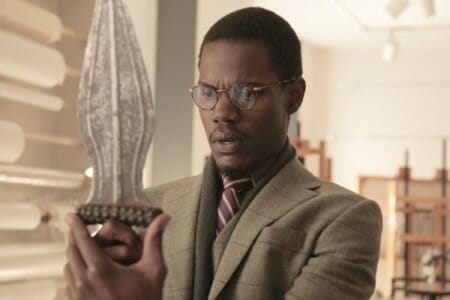
What began as Spike Lee’s woefully mishandled Kickstarter campaign later unveiled itself to be a fascinating, if confounding remake of the cult vampire classic, Ganja & Hess. Transplanting the original film to a modern-day setting, Lee retells the story of a wealthy black anthropologist who transforms into a vampire after being stabbed by a cursed dagger. Filmed over the course of 16 days around Martha’s Vineyard, it’s a suave, stylish experiment whose problem is not style-over-substance but rather, an overabundance of substance. Clocking in at slightly above the two-hour mark, the film juggles all manner of themes concerning addiction, racism, classism and gender politics. As a result, the final product jumps all over the place, never quite settling on a coherent train of thought. Then again, maybe that’s the point—it’s a film determined to provoke questions rather than deliver a clear-cut message. Though certainly sluggish at times, Da Sweet Blood of Jesus has just enough bursts of Lee’s vibrant energy to make the viewing worth one’s time. —Mark Rozeman
93. House of Dark Shadows (1970)Director: Dan Curtis
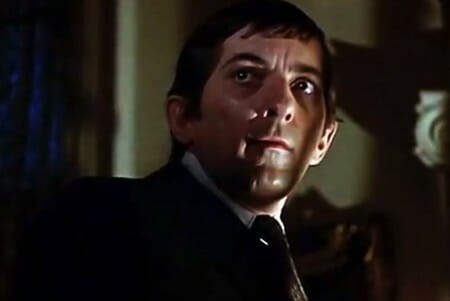
To call House of Dark Shadows a continuation of the popular gothic soap opera Dark Shadows would be a bit of a misnomer, as producer/writer Dan Curtis basically used this 1970 film as an opportunity to gather together the show’s cast and essentially retell the story of Barnabas Collins, the fan favorite vampire character. As a feature, the film ultimately suffers from the same issues that plagued the show, most notably some lethargic pacing problems. Nonetheless, the film boasts the same understated, eerie mood that made the TV program a hit, as well as some surprisingly gory segments, given that Curtis wanted to take advantage of not needing to bow to network restrictions. While unmistakably dated, such a modest production still has a decent leg up on Tim Burton’s 2012 cartoonish reimagining when it comes to crafting an intriguing story. —Mark Rozeman
92. The Little Vampire (2000)Director: Uli Edel
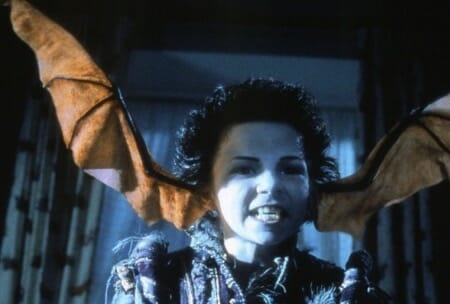
In the interest of full disclosure, I’m viewing The Little Vampire through the rose-colored lenses of nostalgia goggles. I’m well aware it’s more than slightly corny and a somewhat cynical attempt at marketing vampire stories to young children, but darn it if it didn’t work on me. Jonathan Lipnicki (the adorable child from Jerry Maguire) plays a young boy whose family moves to Scotland. Feeling isolated, he is soon befriended by a family of vampires who are on the run from a ruthless hunter (a pre-Downton Abbey Jim Carter). What happens over the course of the film’s 95-minute runtime is little more than fun, very silly shenanigans of the Casper variety. But, hey, if it ends up peaking a kid’s interest in vampire lore, all the better for it. —Mark Rozeman
91. The Fearless Vampire Killers (1967)Director: Roman Polanski
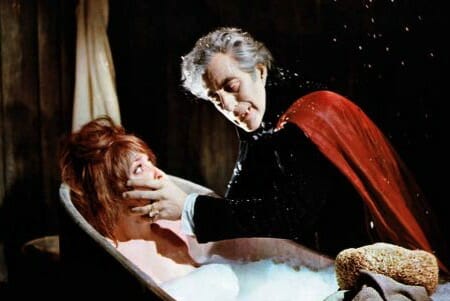
Following several acclaimed psychological dramas, including such classics as Repulsion and Knife in the Water, Roman Polanski tried his hand at kooky comedy with The Fearless Vampire Killers. A comedic take on the kind of Gothic horror productions popularized by Hammer, it’s a film that asks such questions as—could a cross successfully ward off a Jewish vampire? (The answer is no.) As a whole, the plot is a hot mess, awkwardly veering between broad comedy and existential arty drama with little regard to creating a comfortable shift. Nevertheless, there is a macabre fascination to the proceedings, proving that even Polanski’s failures can still be intriguing. —Mark Rozeman
90.The Wisdom of Crocodiles (1998)Director: Po-Chih Leong
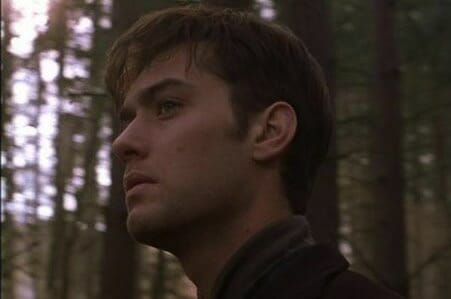
The Wisdom of Crocodiles is spearheaded by a magnetic performance from Jude Law. This is important to mention because it is only through the sheer wattage of the actor’s star power that the film’s frequent detours into indulgent, navel-gazing pondering never completely derail the project. Law portrays Steven, a London vampire in desperate search for the right woman to share his life with. He eventually discovers a possible match in the form of Elina Löwensohn’s Anne (it’s worth noting that, Löwensohn had previously starred in Nadja, another out-of-the-box vampire flick); however, it soon becomes clear that their romance is bound to have a not-so-happy end. Notable for excluding several key aspects of vampire tradition (Steven can travel in the sunlight), the film is, at its best, a highly romantic and quasi-poetic interpretation of the standard vampire story. At worst, it’s akin to that annoying guy in your writing class who tries to impress girls with his “deep” thoughts. —Mark Rozeman
89. I Am Legend (2007)Director: Francis Lawrence
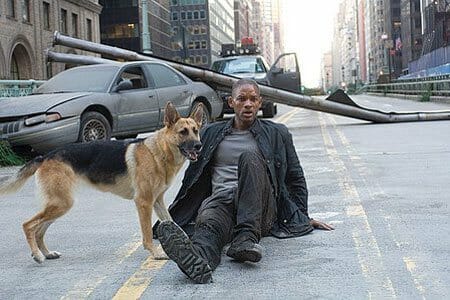
The most recent take on I Am Legend retains the name of the original 1954 novel by Richard Matheson, which is ironic given that this Will Smith vehicle is the least faithful of the story’s three adaptations overall. Smith plays protagonist Robert Neville without an ounce of moral ambiguity, which hurts any attempted theme at humanizing the so-called monsters. The “darkseekers” likewise don’t retain many vampire characteristics, except for their vulnerability to UV light. Whether they’re intelligent is kept muddled—most of the time, the monsters act like mindless animals, but somehow they also manage to set a complicated mechanical trap for Neville. The best portions of the film are the ones that embrace its post-apocalyptic surroundings, as Will Smith scavenges and forages his way through an abandoned Manhattan with his faithful dog. Some excellent characterization is set up in this way during the film’s first half, especially of Neville’s crumbling mental/social faculties, but it eventually bogs down into a bunch of narratively glossed-over CGI quasi-vampires assaulting the good doctor’s abode, even as he tries to help them (because Will Smith is an infallible hero). —Jim Vorel
88. The Vampire Lovers (1970)Director: Roy Ward Baker
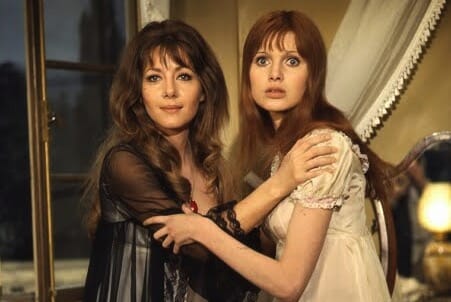
Notable as being the final Hammer production to be funded via American money, The Vampire Lovers marks one of the final projects in the company’s filmography to feel like an actual movie as opposed to a quickie exploitation film where the crew had brief access to a castle. A loose adaptation of Joseph Thomas Sheridan Le Fanu’s classic Gothic work, Carmilla, The Vampire Lovers features future Hammer staple Ingrid Pitt as the “Carmilla” figure, a seductive vampire who targets a wealthy European family—specifically, the gorgeous and impressionable young ladies. Featuring copious amounts of nudity and girl-on-girl action, the action is competently directed enough that it only rarely feels like softcore porn. Hammer would make other lesbian-themed vampire movies, but this one and Countess Dracula (also starring Pitt) stand as the best of the bunch. —Mark Rozeman
87. The Night Stalker (1972)Director: John Llewellyn Moxey
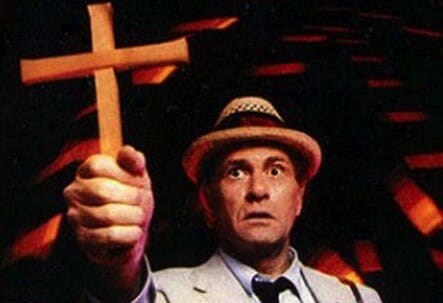
The TV film that gave birth to Carl Kolchak, the protagonist of the short-lived but beloved Kolchak: The Night Stalker series (a program that served as a direct influence for The X-Files), The Night Stalker lays out the origin story of everyone’s favorite abrasive, yet sharp paranormal investigator. As the story opens, Kolchak is a washed-up reporter working a dead-end beat in Las Vegas. One day, a friend at the FBI loops him into a bizarre case wherein someone is sucking the blood of young women. While the pacing might at times be a bit too glacial for today’s viewing audiences, The Night Stalker succeeds largely on the strength of Darren McGavin’s endearing performance and the script by genre legend Richard Matheson. —Mark Rozeman
86. Countess Dracula (1971)Director: Peter Sasdy
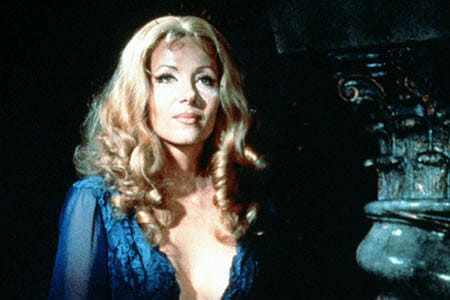
As gleefully shameless as its title suggest, Countess Dracula centers on a widow who discovers that she can prolong her youthful exterior by bathing in the blood of young women. She proceeds to kidnap and murder several local girls, carry on a sexual relationship with a young lieutenant and disguise herself as her own daughter to explain away her youthful appearance. It’s the type of madcap insanity that would grow to define latter-day Hammer horror films. Unlike other less successful attempts, however, this production skates right on that thin line between bad taste and trashy fun. —Mark Rozeman
85. Midnight Son (2011)Director: Scott Leberecht
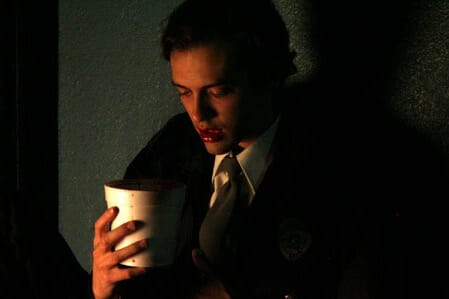
Like most major metropolitans, Los Angeles is a city that breeds night owls. Jacob—the young man at the center of Scott Leberecht’s low-budget horror film—is one such person, albeit not necessarily by choice. His skin burns in the daylight and he is constantly hungry—could he be a vampire? Taking a page from the likes of George A. Romero’s Martin, Midnight Son explores the vampire mythos through the prism of a intimate character drama. Sure, the film is burdened with its fair share of clichés, but it’s a incisive little indie that hits all the right notes and is worthy of more eyeballs. —Mark Rozeman
84. Sundown: Vampire in Retreat (1989)Director: Anthony Hickox
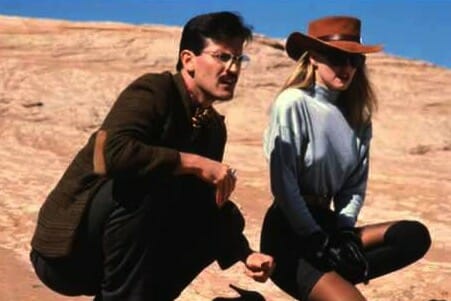
After Vestron Pictures folded in the late ’80s, Sundown was all but unceremoniously dumped from the company’s roster and never granted a proper theatrical release. And while it’s certainly no lost masterpiece, the film’s subsequent cult status more than proves that there was indeed an audience for this offbeat Western/horror/comedy hybrid. The film is set in a desert town where a group of vampires have decided to live out their eternal lives in peace and quiet. Things begin to go awry after an interloping human family becomes the catalyst for a civil war between the vampires who wish to remain hidden and those who desire a return to their predator status. If all that weren’t enough to get you interested, then just know that Bruce Campbell plays a descendant of Van Helsing—that should be enough for most genre fans right there. —Mark Rozeman
83. The Lair of the White Worm (1988)Director: Ken Russell
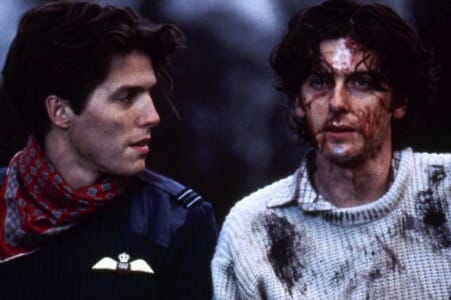
Ken Russell may have grown less critically lauded with age, but no one will ever argue that he grew any less strange. Case in point: The Lair of the White Worm. Based on the novel of the same name by Bram Stoker (one infinitely less celebrated than Dracula), the film stars future Doctor Who thespian Peter Capaldi as a Scottish archaeologist who inadvertently releases a vampiric snake monster that begins tormenting those responsible for slaying it in a past life . Also featuring Amanda Donohoe and Hugh Grant in one of his earliest film roles, White Worm serves as a nice slice of latter-day Russell mania. Nestled somewhere between a Oscar Wilde comedy-of-manners and a monster movie on acid, it’s a film that defies characterization. —Mark Rozeman
82. Habit (1997)Director: Larry Fessenden
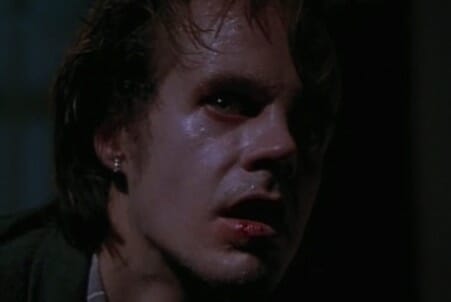
Released in 1997, Habit portrays vampirism as an extension of one New York bohemian’s ever-escalating descent into self-destruction. Writer/director Larry Fessenden stars as Sam, an artist reeling from the death of his father. One day, he meets a beautiful woman and the two begin engaging in kinky sex-play, mostly involving her sucking blood from his wound. Playing as kind of a vampire take on Leaving Las Vegas, Habit revels in its ambiguity and symbolism. It’s as gritty and subtle as the Hammer entries are bombastic and campy. —Mark Rozeman
81. Daybreakers (2009)Director: The Spierig Brothers
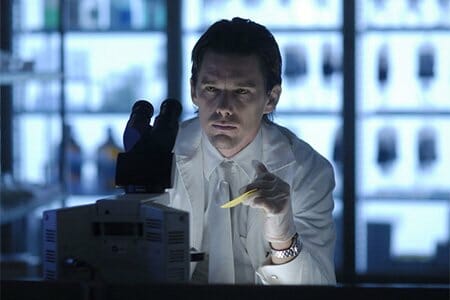
Released in the midst of Twilight mania, Daybreakers offered a nice alternative to that tween vampire franchise, taking its influence more from the likes of Philip K. Dick than YA romance novels. Set in the near-future wherein a vast plague has transformed most of the world’s population into vampires, Ethan Hawke stars as a scientist who must figure out a way to save the vampire race before their supply of blood runs out. Daybreakers biggest problem is that it never really makes it clear how seriously we should take its (admittedly cool) premise. At times, it strives for pathos while, other times, it seems content to merely be a trashy B-thriller. In the end, the good mostly outweighs the bad and, given the lack of proper “sci-fi vampire movies,” it’s not a half-bad entry. —Mark Rozeman
80. Love at First Bite (1979)Director: Stan Dragoti
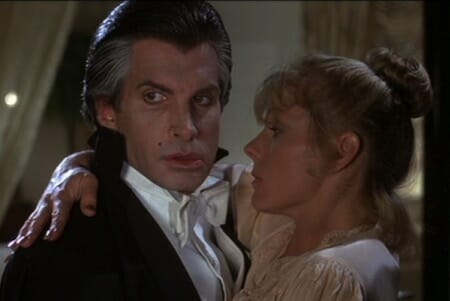
George Hamilton brings color to the pasty vampire genre in director Stan Dragoti’s (Mr. Mom) spoof, a fitfully amusing fish-out-of-water tale in which the ageless creature gets plopped in late ’70s New York City. “Children of the night: Shut up!” pleads Hamilton’s Vladimir Dracula, a bloodsucker who’s experienced a series of bummers as of late. He’s been evicted from his castle in Transylvania because of back taxes (natch), and the freewheeling, women’s lib dating scene of disco-era NYC proves lonely. What’s a Count to do when he can’t get past the velvet rope? Along with that Lugosi-copping quip (and makeup artist William Tuttle, who also worked on 1931’s Dracula), the film gives credit where it’s due: The Renfield of Bram Stoker’s novel turns up here as Dracula’s sidekick; Susan Saint James’ fashion model/Hamilton’s love interest is a descendant of his beloved Mina Harker; and Saint James’ BF, psychiatrist Jeffrey Rosenberg, is the grandson of Van Helsing but changed his name to Rosenberg “for professional reasons.” The “humor” is broad as hell—think: blood banks—and at times datedly racist, but Hamilton is winning as the displaced, misunderstood Vlad. —Amanda Schurr
79. I Vampiri (1957)Director: Ricardo Freda, Mario Bava
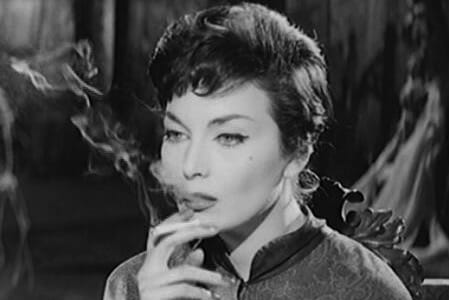
Before Black Sunday put him on the map, Mario Bava’s first major dalliance with horror came when he shot and co-directed (along with Riccardo Fredda) this tale of a madman who goes around the countryside capturing young woman to drain their blood . As one of Italy’s first official horror films, I Vampiri throws in everything but the kitchen sink. Unfortunately, today it’s more notable as a footnote in history than a legitimate thriller. Still, Bava’s cinematography clearly indicates an eye and feel for the material that would serve him well years later. —Mark Rozeman
78. The Night Flier (1997)Director: Mark Pavia
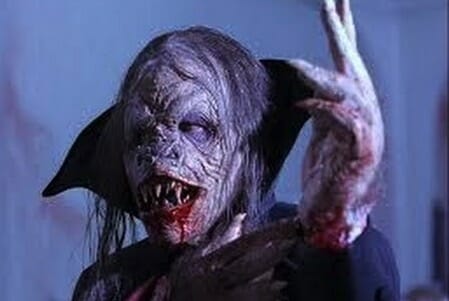
The Night Flier is a pulpy, simple story, insular even among other Stephen King short story adaptations. It follows a cynical, charlatan of a tabloid reporter as he searches for a serial killer he’s dubbed the “night flier,” a would-be vampire who flies from small airport to small airport in his personal plane/coffin, killing wantonly as he goes. How the presence of the same plane at each murder site escapes police attention, I’m not entirely sure. Regardless, the “serial killer” does of course turn out to be a real vampire. He’s not on screen long, but the film’s highlight is undoubtedly the gnarly design they chose for the monster—one big, long central tooth, combined with a cheap, costume store Dracula cape. It feels hokey and mildly humorous,and so does The Night Flier, which doesn’t take itself the least bit seriously and intends to simply provide 90 minutes of mildly scary diversion at minimal cost. At least it answers the age-old question of “Do vampires use urinals?” As it turns out; yes they do. —Jim Vorel
77. Scars of Dracula (1970)Director: Roy Ward Baker
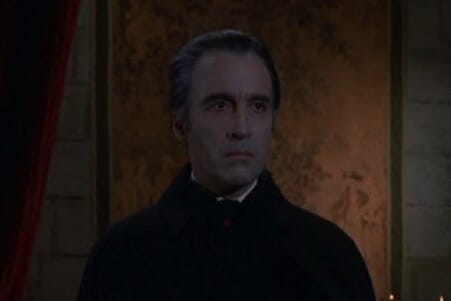
Scars of Dracula, the fourth Hammer Dracula sequel, feels like a reaction to a lukewarm response to the previous Taste the Blood of Dracula, a conscious decision to “return the series to its roots,” which really just means rehashing some of the old vampire tropes. Dracula is back in his castle in Transylvania once again for this one, pretty much just preying on a few people who happen to wander into his clutches. The plot leaves much to be desired, but the good news is that Christopher Lee has much more screen time, dialog and vitality in this movie than the last few entries—it’s honestly weird to hear him speaking this much. The action and especially the gore have been turned up in this one as well, with titillation that also sort of mirrors Dracula Has Risen From the Grave. However, as in Taste the Blood of Dracula, it runs out of steam in a conclusion that really comes out of nowhere—it feels like the conclusion of a Shaw Bros. kung fu film where the credits start rolling the second the villain is abruptly killed. It’s an uneven entry in the series, but the castle scenes are exciting and it would probably be a fun watch for an audience who had never seen Christopher Lee as Dracula before. —Jim Vorel
76. Vampires (1998)Director: John Carpenter
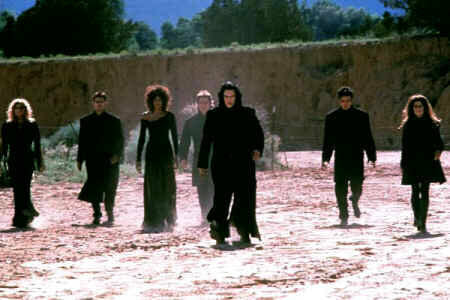
In a movie that’s more about the deep and abiding romance between two vampire hunters than it is about the vampires themselves, John Carpenter crafted a love letter to vampire cinema that also seems to kind of hate vampire cinema. In Vampires, the creatures are merciless, beastly, bearing none of the elegance or culture of those in an Anne Rice novel, just bent on killing all humans with maximum savagery. As Jack Crow (James Woods)—resident swaggering, ice-cold motherfucker who, when he was a young boy, witnessed his own parents become vampires, setting him on a lifetime of bitter vampire extermination—tells one of many priests in this film, “Forget whatever you’ve seen in the movies: they don’t turn into bats, crosses don’t work.” Joined by his infatuated life companion, Anthony Montoya (Daniel Baldwin), Jack combs the American Southwest for the agents of the devil, brutally murdering every single one (just stabbing these vampires’ chests until each one’s a mangled, yellow-red pulp, screaming, “Die! Die!” the whole time), eventually learning that nothing matters, life sucks, and everything you know and hold dear will be horribly wiped from the face of the earth—except for when the forces of evil are defeated by the powerful emotional connection between two slayers. Love, apparently, conquers all. —Dom Sinacola
75. Son of Dracula (1943)Director: Robert Siodmak
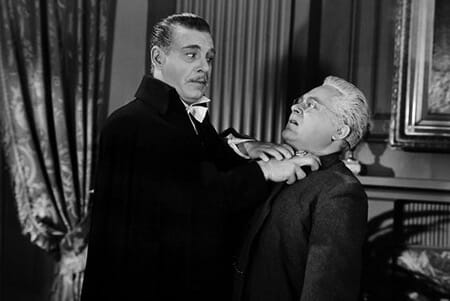
The roster of actors featured in the original Universal monsters series could be confusingly incestuous when it comes to criss-crossing roles, and that’s how we end up with a Son of Dracula film starring The Wolf Man himself, Lon Chaney Jr. in the vampire role. The film is notable for being the first instance of the now eye-rolling “Count Alucard” moniker, which is of course simply “Dracula” spelled backwards. In fact, it’s never truly clear whether Chaney’s vampire in this film is really the “son of Dracula” or is simply a different version of Dracula himself. Regardless, the plot involves the Hungarian vampire visiting New Orleans to seek a woman who is herself hoping to use the vampire’s gifts to achieve immortality. It’s stylishly shot, but Chaney makes a somewhat awkward, paunchy Dracula, without much of the panache or presence that came so easily to the mesmerizing Lugosi. Today, the film still has some admirers, but the Dracula sequels in general produced by Universal never reached close to the heights of its Frankenstein sequels, and Lon Chaney Jr. has continued to be much more celebrated in his werewolf roles. —Jim Vorel
74. Vamps (2012)Director: Amy Heckerling
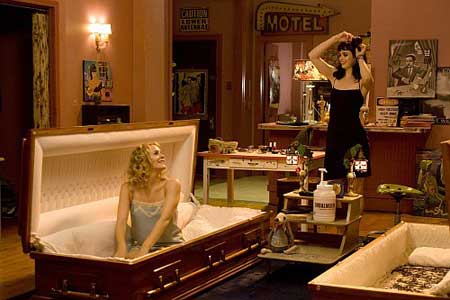
A vampire comedy from the mind of Amy Heckerling, the director behind Clueless and Fast Times at Ridgemont High, Vamps offers up a sharp, if candy-colored take on the concept of vampires adapting to modern life. Krysten Ritter and Alicia Silverstone play two socialite vamps whose lives come under scrutiny after Ritter’s character begins dating the son of Van Helsing (played, in a hilarious twist, by Wallace Shawn). Content with its tongue-in-cheek approach, the film whizzes by, fueled effectively on a healthy amount of wit and inspired supporting turns from the likes of Justin Kirk, Sigourney Weaver and Malcolm McDowell. —Mark Rozeman
73. The Legend of the 7 Golden Vampires (1974)Director: Roy Ward Baker
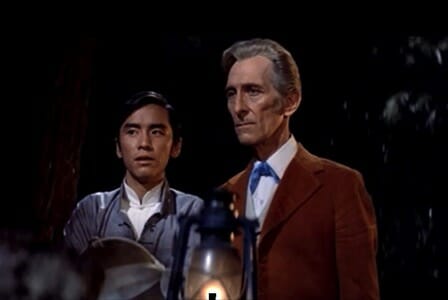
Satanic Rites of Dracula may have been the last Hammer Dracula movie to feature Christopher Lee, but there was still one more “Dracula film” left in the studio before it rode off into the sunset. The Legend of the 7 Golden Vampires is probably the most absurd movie Hammer ever made, which makes sense, given that it was a co-production with famed Hong Kong kung fu experts Shaw Brothers, cashing in on the nascent martial arts craze of the time. Dracula, played by some other random guy, is only in the film for a few minutes before possessing the body of a Taoist monk and absconding to Chungking, where he leads a cabal of seven Chinese vampires. Yes, the hopping kind! What follows is a series of crazy kung fu fights with ridiculously fake-looking weaponry, flaming vampires and the return of the always delightful Peter Cushing as vampire hunter Van Helsing. Unfortunately, Cushing is really looking his age at this point, and putting him in the middle of acrobatic kung fu fights is an extremely awkward decision. There’s even a bit where he trips and falls directly into a campfire, which looks totally unintentional, but hey, you take all the stunts you can get out of a brittle, 61-year-old lead actor. It’s a colorful, crazy film that is ultimately more entertaining (in a schlocky way) than the last few tired takes on Dracula that preceded it.—Jim Vorel
72. Dracula (1979)Director: John Badham
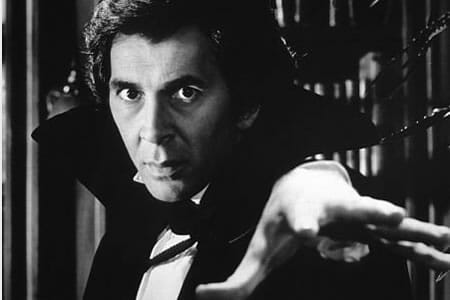
1979 had no shortage of Dracula movies, with George Hamilton’s Love at First Bite storming the box office and Werner Herzog’s Nosferatu the Vampyre enrapturing the arthouse crowd. Between the two, John Badham’s Dracula probably came across as stodgy and overly traditional. It’s certainly a shame because there is much to appreciate about Badham’s more romantic take on the Bram Stoker novel. Sure, Frank Langella may not be the most obvious choice for the Count, but here he both captures the character’s mesmerizing charm and highlights the more sensitive soul behind the monster—important qualities given the emphasis the film places on the romance between him and Mina. Also of note—the elder Sir Laurence Olivier hamming it up as Van Helsing. —Mark Rozeman
71. Captain Kronos—Vampire Hunter (1974)Director: Brian Clemens
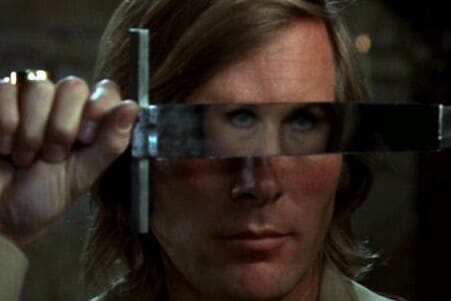
Another latter-day Hammer horror film worthy of rediscovery, Captain Kronos follows the adventures of the titular character—a swashbuckling vampire hunter with exemplary sword skills and a very Nordic face. Accompanied by his hunchbacked assistant, Kronos acts as a Van Helsing-type figure, serving as a dispatcher of his bloodsucking nemeses. It’s certainly a shame this film didn’t result in the kind of B-grade franchise afforded to other Hammer productions, as the company shuttered shortly thereafter. Still, as the lone entry to the series, Captain Kronos is a fun bit of vampire-centric escapism. —Mark Rozeman
70. Vampire Circus (1972)Director: Robert Young
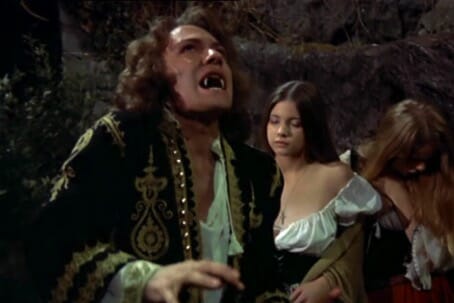
At the time of its release, The Vampire Circus stood as a Hail Mary experiment from Hammer. Set in 19th century Austria, the film centers on a town that has been ravaged by a plague. Looking for escape from their grim existences, the villagers flock to a newly arrived circus that promises exotic attractions. The problem? The circus also brings a vampire who preys upon the town’s children. Drenched in Gothic atmosphere and excessively gory even by Hammer standards, Vampire Circus represents one of the company’s last notable horror installments before the late ’70s brought about its inevitable decline. —Mark Rozeman
69. Deafula (1975)Director: Peter Wechsburg
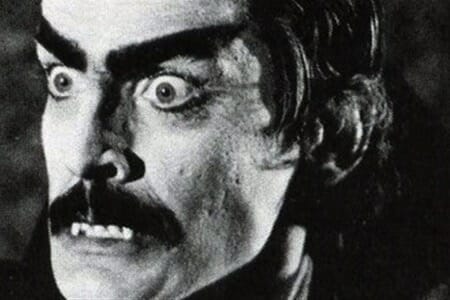
Despite its modest production values, Deafula holds a special place in film history—namely, it marks the first time that a film has been performed completely in sign language (voiceover was employed later for non-ASL-friendly audiences). Photographed in black-and-white, the film retains the classic feel of the Universal horror movies, albeit with some less than stellar make-up, costuming and production design work. What the film lacks in resources, however, it makes up for with sheer weirdness. There’s something surreal, yet somewhat inspiring seeing a group of actors signing their lines to one another. It gives the film an off-kilter energy that informs every scene. —Mark Rozeman
68. Innocent Blood (1992)Director: John Landis
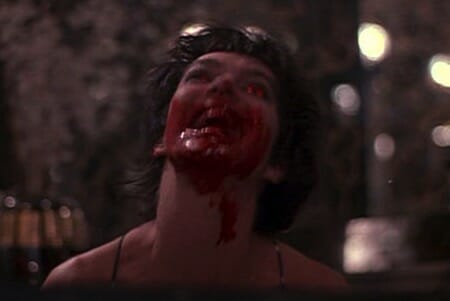
Fresh off the success of her star-making turn in Luc Besson’s Nikita, French actress Anne Parillaud made her following appearance in John Landis’ horror-action yarn as Marie, a vampire who, in many ways, serves as the proto-Dexter, as she only kills and feasts on criminals. Unfortunately, one night, after a series of poor decisions, she ends up giving vampiric powers to a psychotic mob boss. She then must team up with an undercover cop to bring him down. As a film, Innocent Blood is pretty much a mess, but—considering it mixes horror, action and crime drama, not to mention a dash of buddy cop dynamics for good measure—that’s almost to be expected. Bolstered by an incredible supporting cast of character actors (Robert Loggia, Tony Sirico, Luis Guzman) and some top-notch action, Innocent Blood is an incredibly underrated, film-nerd-friendly installment in Landis’ filmography. —Mark Rozeman
67. Hotel Transylvania (2012)Director: Genndy Tartakovsky
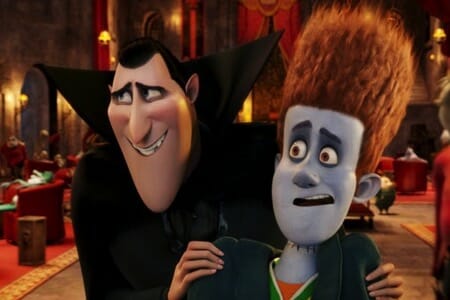
Though dismissed by some as yet another juvenile Adam Sandler vehicle (only this time with an eye towards kiddie audiences), Hotel Transylvania delivers to a surprising degree, displaying a buoyant giddiness and nonstop energy that is utterly infectious. Much of this could be attributed to the work of animation god Genndy Tartakovsky (he of Samurai Jack, Powerpuff Girls and Dexter’s Lab fame). The gags come as hard and fast as any Zucker-Abrahams-Zucker production, with many cast members doing some of their best comedic work in years. Though perhaps overly exhausting and annoying for some, Hotel Transylvania displays an ambition and dedication to its craft that feels sorely lacking in many mainstream theatrical movies aimed at children. —Mark Rozeman
66. Yakuza Apocalypse (2015)Director: Takashi Miike
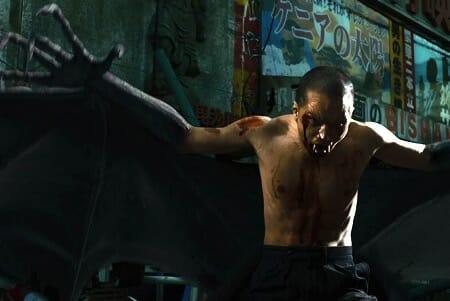
Is there possibly anything I could say about Yakuza Apocalypse that a combination of the title and the attachment of director Takashi Miike doesn’t already imply? Per its moniker, the story centers on a sect of the yakuza and its various idiosyncratic members. There’s Kamiura, a legendary gangster whose secret vampirism allows him to slash through his enemies like butter. Then there’s Kageyama, a wannabe Yakuza whose allergy to tattoo ink prevents him from getting officially branded. Oh, and the hordes of yakuza vampires that Kamiura has imprisoned under a restaurant. Needless to say, the film, with its combination of bombastic superviolence, broad slapstick and excessive gore, represents Miike at his most cartoonishly crazed. The director starts at a sprint and never lets up. In all likelihood, the film will not climb to the top of the Japanese auteur’s ever-expanding filmography anytime soon. That being said, you won’t find many other vampire movies that are this consistently unhinged. —Mark Rozeman
65. Jakob’s Wife (2021)Director: Travis Stevens
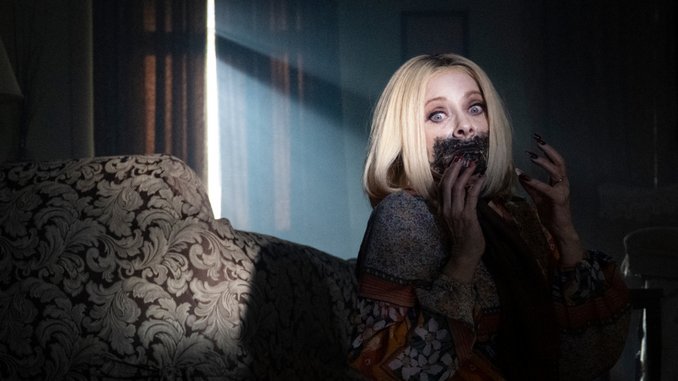
More than just a vampire movie, Jakob’s Wife is about trying to escape domesticity and the trappings of a middle-aged married woman’s everyday life. Vampirism is often used as a metaphor for things such as infection (30 Days of Night), power over others (Dracula), sex (Interview With a Vampire) and more. Here, Stevens depicts vampirism as something liberating rather than harrowing. It’s exciting to see a horror movie centered on a woman who isn’t a hot young wife, but rather a woman three decades into her marriage with a cemented routine and years of resentment. In the midst of the tonal rollercoaster, its female-focused message remains anchored by a career-best performance from Crampton, a horror legend who is no stranger to camp or gore. She showcases a range that’s never been seen before, portraying both a quiet, sad housewife and a powerful, confident vampire with ease. Her subtlety is illustrated in a tense dinner scene where Jakob dominates the conversation but the camera stays on Annie’s face. Crampton is able to portray anger, frustration and exhausted sadness without uttering a word. —Mary Beth McAndrews
64. Humanist Vampire Seeking Consenting Suicidal PersonDirector: Ariane Louis-Seize
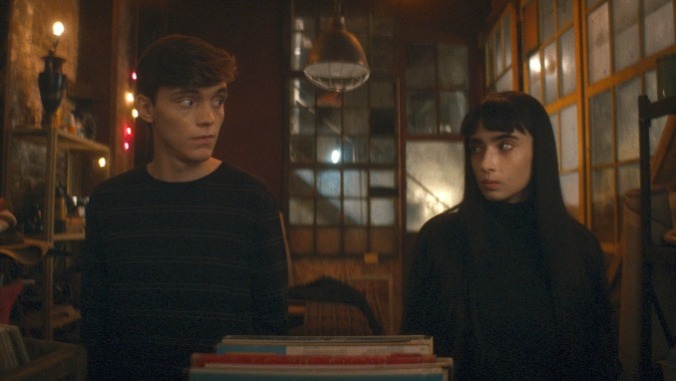
On the page and on screens, vampires come in a range of makes and models: Sexy, hideous, humanoid, monstrous, cunning, coarse, kindly, cruel. But the massive popularity of franchises like Twilight suggests that some audiences harbor an inferiority complex over their frailty compared to the indomitable power of the average vamp. They’re faster than us. They’re smarter than us. They’re stronger than us, more worldly than us. They have perfect hair, forever. Quebec’s Ariane Louis-Seize has a radical counterpoint to this formulation of the vampire archetype, and pretty much all the other variants taking up real estate in horror at this moment: What if vampires were just like us? Her feature debut, Humanist Vampire Seeking Consenting Suicidal Person, is not only packing one of 2024’s standout titles; it’s the most original vampire film of the 2020s so far.
Sasha (Sara Montpetit) is in her teens, meaning she’s really 68. (Here, vampires aren’t eternally youthful; they age, but slowly, so three centuries for them looks like seven decades for us.) An only child to her father Aurélien (Steve Laplante) and mother Georgette (Sophie Cadieux), Sasha struggles with vampires’ core survival mechanism: Hunting. She can’t bring herself to kill. She takes her blood from hospital bags instead, until Aurélien and Georgette show her tough love. What’s the point of living if it means either hurting others or suffering with crushing loneliness? It’s a simple question bearing rich fruit: A kinship between mortals and the ageless that’s uncommon in the genre. —Andy Crump
63. Nadja (1994)Director: Michael Almereyda
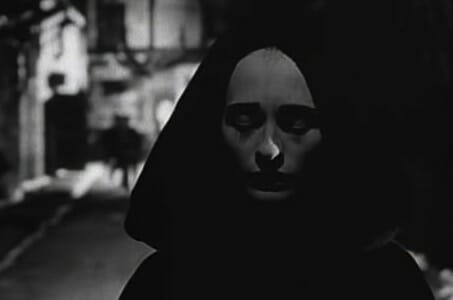
Another installment of the vampires-as-city-hipster subgenre, Nadja transplants the vampire mythos onto the deadpan indie dramedy of Hal Hartley. Produced by David Lynch (who also cameos as a morgue attendant), the film posits itself as a domestic drama with vampirism treated as casually as if were any other daily activity. The central character is Nadja, a young woman reflecting on the death of her father, The Count. Soon, however, Nadja and her family find themselves squaring off against Van Helsing (a wonderful Peter Fonda) and his crew. Boasting a dynamite soundtrack that features music from the likes of Portishead and My Bloody Valentine, Nadja positions itself as a strange hybrid of noir horror and Sundance quirkfest. Although the film never quite reconciles these two notions, there’s enough cool images and skill at play to make this an offbeat vampire flick worth checking out. —Mark Rozeman
62. Summer of Blood (2014)Director: Onur Tukel
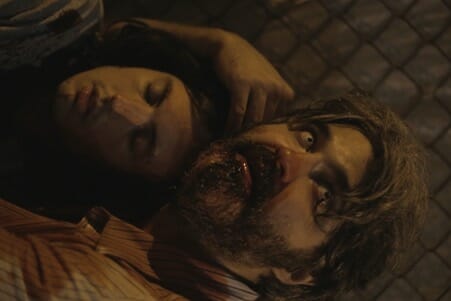
Back in the late ’90s, indie director Onur Tukel scored his only quasi-hit with the vampire drama Drawing Blood. Nearly 15 years later, Tukel returned to that well, albeit with a more refined sensibility. Summer of Blood envisions what would happen if one were to drop vampires into the middle of a Woody Allen-esque comedy. Dissatisfied with his dull life, Eric Sparrow (played by Tukel) encounters a stranger who asks him if he wants to die. When sad-sack Eric responds in the affirmative, he is attacked and wakes up displaying vampiric tendencies. These changes make him a hit with the ladies and confident enough to quit his dead-end job. When the bloodlust becomes too intense to resist, however, Erik must figure out how to reconcile his cushy life with his newly murderous nature. A smart, witty sendup of modern life, Summer of Blood stands as one of the sharpest vampire comedies on the market. —Mark Rozeman
61. Planet of Vampires (1965)Director: Mario Bava
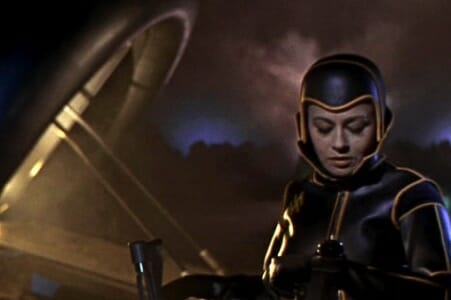
A pair of spaceships crashes land on an unexplored planet. From there, the dead crew’s bodies are possessed by some mysterious entity, and the reanimated corpses begin preying upon the remaining survivors. Okay, yes, the title is super misleading considering that technically the monsters of this story are more zombies than vampires. But, if the title wants to refer to them as vampires, I’m considering this one for the list, primarily because it’s a gem of a B-movie that deserves a bigger audience. Long heralded as the predecessor to Ridley Scott’s Alien, Mario Bava’s Planet of the Vampires is an atmospheric dreadfest lurking beneath the exterior of the kind of campy B-movie one would normally see on Mystery Science 3000. It’s living proof that, even when saddled with major restrictions, Bava was a master of mood. —Mark Rozeman
60. Buffy the Vampire Slayer (1992)Director: Fran Rubel Kuzui
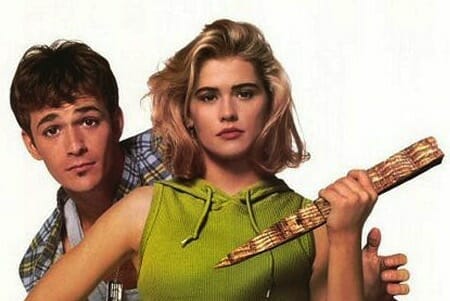
Joss Whedon was none too thrilled with the treatment of his first produced film screenplay—and maintained the movie was a stand-alone, completely separate beast from the later TV series that would secure his place in pop culture history. His unhappiness aside, there’s still plenty to enjoy in this tongue-in-cheek comic horror fantasy, thanks to Whedon’s wry bon mots, smart pacing and a cast that refuses to take themselves too seriously. As the titular foe of fangs, Kristy Swanson is pitch-perfect, a reluctant heroine who muses, “All I want to do is graduate from high school, go to Europe, marry Christian Slater, and die.” Don’t we all, B.? Donald Sutherland is the sensei to Kristy Swanson’s novice stake-wielder, while Dylan, er, Luke Perry does era-appropriate heartthrob duty. And then there’s Rutger Hauer as the main bloodsucker and Paul “Pee-wee” Reubens as his ghoulish sidekick. (Hilary Swank and David Arquette show up, too.) It’s silly, self-aware fun, even if the second half falls apart in predictable fashion. —Amanda Schurr
59. Waxwork (1988)Director: Anthony Hickox
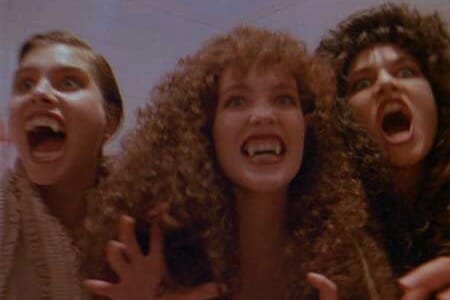
Like The Monster Squad, Waxwork plumbs the popular consciousness of the 1980s, looking to off-brand horror archetypes to unleash a menagerie of goofy evil onto an unsuspecting world already jaded with the actual violence at the core of the villains it namedrops. And so, among the dastardly wax exhibits just waiting for the right moment to come to life is a Count-Dracula-type diorama. Upon getting too close to the models, obligatory high school skank China (Michelle Johnson) is plunged into the past to find a Victorian dinner party of raw meat and blood attended by a coterie of very attractive vampires. China, of course, is the party’s most important guest, because Dracula and his minions have plans to turn her, especially since they have her “fiancé” shackled in the basement, most of his left leg already chewed apart. China may become yet another victim of Waxwork’s weird, jarring take on sexual horror and masochism—epitomized by casting the Marquis DeSade as one of the world’s most notorious psychopaths—but her terrifying experience is only prelude to the final battle at the waxworks, in which Dracula finally makes it to the real world, transforms into a bat, and is easily decapitated with a revolver. Unlike The Monster Squad, Count Dracula isn’t the leader the monsters need—he’d just one more gruesome dude to annihilate before the final swordfight with the Marquis DeSade. Because that happens. The ’80s were a wonderful time for film. —Dom Sinacola
58. Lifeforce (1985)Director: Tobe Hooper
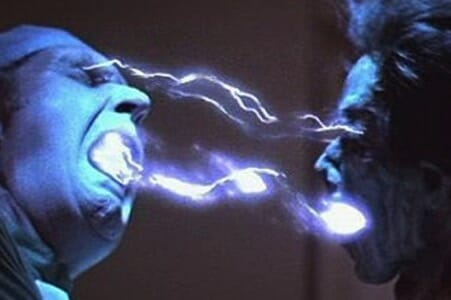
Even though he’s a classic horror director, Tobe Hooper of Texas Chainsaw Massacre fame isn’t really the guy most would have expected to produce a kooky, ’80s sci-fi-infused vampire film. That is of course provided that you recognize the aliens of Lifeforce as vampires. Hooper ditches the grimy aesthetic of his earlier work and cleverly plays with the old vampire genre conventions, keeping a few bat references but ditching the blood-sucking. Rather, the “space vampires” have been updated into more cerebral, aloof killers who drain people of their life energy. Oh, and by the way—the lead “space girl,” gorgeous French actress Mathilda May, spends pretty much the entire film nude, so be ready for that. What you’re left with is a unique, sexually charged sci-fi horror mash-up, equal parts mystical and pseudo-scientific—like a feature-length Twilight Zone episode as presented by USA Up All Night in the mid-’90s. I once saw it screened as part of a 24-hour B-movie festival, and that strikes me as exactly the way to consume Lifeforce: In a half-awake haze full of nudity and desiccated victims exploding into dust. —Jim Vorel
57. Salem’s Lot (2004)Director: Mikael Salomon
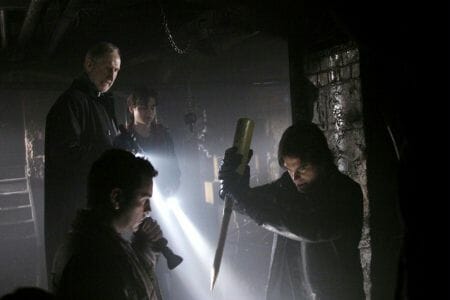
The 1979 Tobe Hooper adaptation of Salem’s Lot succeeded in some areas and failed in many others. Right upfront, the 2004 TNT re-adaptation benefits from a sleeker look, updated special effects and a cast that most productions would kill for. Besides trading in David Soul for the more charismatic (if still slightly flat) Rob Lowe, the cast also boasts Andre Braugher, Donald Sutherland, Samantha Mathis, Rutger Hauer and James Cromwell. Sutherland and Hauer, in particular, really embrace the over-the-top characters that they’re dealt. As with the original, however, there are similar missteps, including an underwhelming finale and some plotlines feel half-formed. Then again, all of these might just be the downside to adapting a book with such a large canvas. When all’s said and done, this version succeeds at being more tightly structured, with a modified ending that gives the whole proceeding a more definitive close. Certainly when placed alongside other Stephen King TV adaptations, it stands as one of the more successful ones. —Mark Rozeman
56. Vampire’s Kiss (1988)Director: Robert Bierman
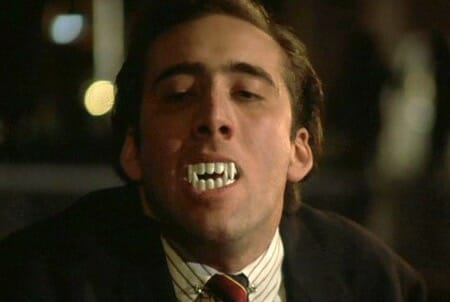
Nicolas Cage is never more Nicolas Cage than in this dark comedy, as a hard-working, hard-partying literary agent who believes his latest one-night stand (Jennifer Beals) has bitten him. We see that yuppie Peter Loew is already mentally unstable, and his conviction in his new vampirism makes matters worse, right down to his buying a pair of plastic teeth when he fails to develop fangs naturally. Then there’s the cult image of Cage maniacally ingesting a real cockroach. (The bug-eating trait is usually a Renfield thing, for Stoker fans keeping score at home.) One man’s demented camp is another’s profound stupidity, and Vampire’s Kiss is Cage’s (shit)show, with solid, if thankless assists from Beals, Maria Conchita Alonso, Kasi Lemmons, and Elizabeth Ashley as Loew’s incredulous shrink. There’s a certain absurdist glee in watching Cage indulge his full crazy (all this, before the actor went on a late aughts haunted house- and castle-buying spree), even if his trademark scenery-chewing erraticism feels a tad stale at this point. For better or worse, there’s nothing half-assed about this all-in ridiculousness. —Amanda Schurr
55. The Omega Man (1971)Director: Boris Sagal
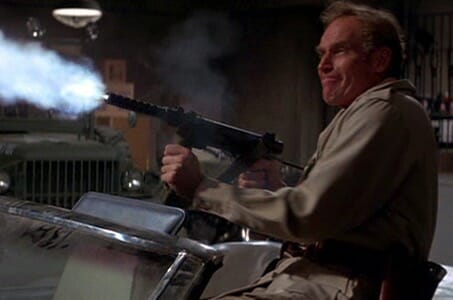
The second official adaptation of Richard Matheson’s I Am Legend, Omega Man is, for better or for worse, a movie distinctly of its time. Everything from the production design to scenes of Charlton Heston’s Robert Neville watching Woodstock on a loop to the afro adorned head of actress Rosalind Cash screams late ’60s/early ’70s. As delightfully corny as the film can be at times, however, it also has formed an indelible impression on pop culture consciousness for a reason. Along with a solid lead performance from Heston, the production puts its notable Hollywood budget to work via several exciting action sequences—all the while, the film never hesitates to draw clear, often dour parallels between the events of the plot and the paranoia-tinged atmosphere that characterized the social environment in which it was made. —Mark Rozeman
54. Blood for Dracula (1974)Director: Paul Morrissey
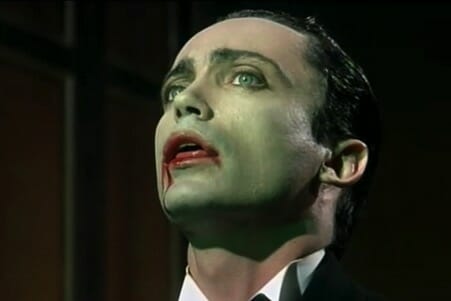
Bela Lugosi and Christopher Lee brought class to their portrayals of Dracula. Frank Langella emphasized the romantic element. Max Schreck played up the monster . Udo Kier’s Dracula in Blood for Dracula is like if Animal from The Muppets decided to take a stab at portraying the Count. Kier’s portrayal is all spastic motions, hissing and puking. It’s all kinds of awesome—a strange performance that perfectly reflects Andy Warhol’s very strange take on Dracula. In this version of the story, Kier’s Dracula recruits the virginal daughters of a wealthy Italian landowner to live with him at his manor. Though he intends to drink their blood, his plan instantly derails upon learning that two of the daughters have enjoyed the company of a hunky American handyman. One part gorefest, one part Marxist manifesto and one part softcore erotica, Warhol’s film is a cornucopia of crazy ideas mixed with provocative execution. Besides recruiting regulars Joe Dallesandro and Maxime de la Falaise, Warhol also enlists the acting services of legendary Italian neorealist director Vittorio De Sica as the clueless landowner, as well as Roman Polanski in a brief cameo. —Mark Rozeman
53. Salem’s Lot (1979)Director: Tobe Hooper

The novel Salem’s Lot stands as one the earliest signs that Stephen King was destined to be one of horror’s newest literary masters. Hollywood was quick to capitalize, with one of the earliest King adaptations being this 1979 CBS TV movie directed by The Texas Chainsaw Massacre’s Tobe Hooper. Restricted by network standards, however, Hooper was unable to indulge in his more gritty, subversive tendencies. The result is a sprawling, frequently messy 1970s take on the haunted house film. The final product is far from perfect—David Soul makes for a wooden lead, the large supporting cast and multiple storylines renders the film meandering and unfocused and the ultimate conclusion comes across as a tad pat considering the lengthy build-up. That’s not to say there aren’t huge highlights as well—specifically, James Mason’s pitch-perfect portrayal of a mysterious antiques dealer as well as a decidedly simple, yet creepy scene involving a vampire gently knocking on a window and asking to be let in. The latter is a moment so disquieting and frightening that it almost single-handedly justifies the entire movie around it. —Mark Rozeman
52. Fright Night (1985)Director: Tom Holland
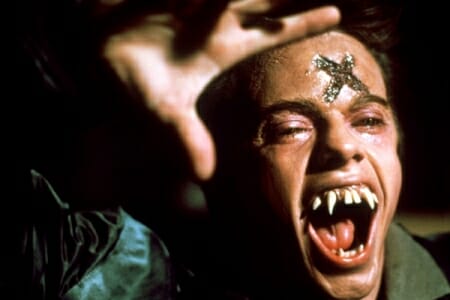
I don’t think anyone will argue that the original Fright Night will ever stand alongside the more classic horror movies of the ’80s … but, by God, if it isn’t still a ton of fun. Certainly, for any major horror junkie, the idea of being the one person who can correctly spot a vampire must serve as some brand of wish fulfillment. In any case, that’s precisely what happens to Charley Brewster when Chris Sarandon’s enigmatic Jerry moves into the neighborhood. Recruiting help from both his friend Evil Ed (a fantastically over-the-top Stephen Geoffreys) and horror-actor-turned-late-night-TV-host Peter Vincent (Roddy McDowall at his curmudgeonly finest), Charley attempts to gather evidence that his new neighbor secretly wants to eat him. Though some of the make-up effects and dialogue are sheer ’80s cornball, the film skates by on its genial, tongue-in-cheek approach as well as Sarandon’s debonair turn as the vampire-next-door. And man, if it doesn’t get effectively gross by the end as well. —Mark Rozeman
51. Thirst (1979)Director: Rod Hardy

Taking its inspiration from the vampiric folklore of Elizabeth Bathory, Australia’s Thirst centers on a woman who discovers that she might share a bloodline with Bathory herself. Abducted by a shady organization of so-called “super men” who feast upon human blood, she must work to escape captivity before they brainwash her into becoming one of their own. Setting aside the distractingly dated ’70s facial hair, Thirst works as a trippy bit of psychedelic horror, with the obligatory political undertones. (The cult conceivably acts as a stand-in for a number of government organizations or societal gatherings.) Though not nearly as notable as the 2009 Park Chan-wook novel for which it shares its title, Thirst is a worthwhile experience for those horror fans looking for something off the beaten path. —Mark Rozeman
50. Dracula: Prince of Darkness (1966)Director: Terence Fisher
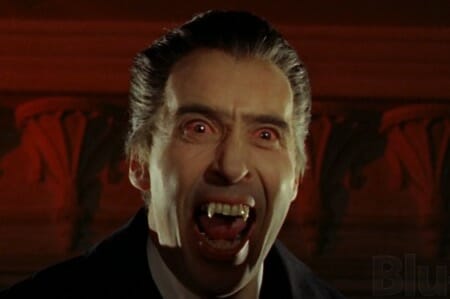
It took Christopher Lee eight years to be talked into returning for this, the first of six times he reprised the Dracula character for Hammer between 1966 – 1973. It’s now fairly common knowledge that Lee didn’t particularly enjoy playing Dracula in the sequels—he seemed to want to branch out, but was repeatedly talked into returning for both his own profit and to literally provide jobs for members of the crew. Still, Hammer managed to produce a very fun, suitably creepy sequel in Prince of Darkness, which approximates a film in the “old dark house” subgenre when a group of travelers gets stranded in Dracula’s castle and lead to his resurrection. It’s not so grandiose as Horror of Dracula, and there’s no Van Helsing, but Lee is great in his physical performance—he commands the screen anytime he appears. Notable is the fact that Dracula has literally zero lines in this film, something Lee later claimed was because he refused to say them after reading the script: “If you think I’m going to say any of these lines, you’re very much mistaken. They were quite appalling.” It’s rather amazing that, despite this, the film manages to be one of the more watchable, professional-feeling of the Hammer Dracula series. The moral of the story is that Christopher Lee could get a lot of mileage out of a hiss and some bared fangs. —Jim Vorel
49. Dracula’s Daughter (1936)Director: Lambert Hillyer
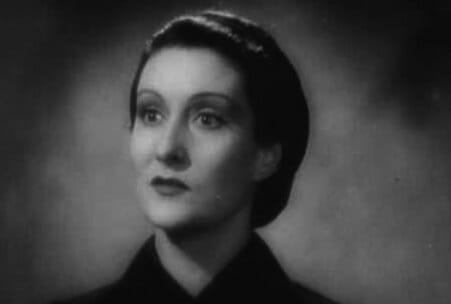
It’s easy to forget that there was a time in horror where a successful film couldn’t automatically be assumed to spawn a dozen sequels. Case in point: Universal’s original 1931 Dracula with Bela Lugosi, which was a huge success but didn’t spawn an immediate sequel. It finally got one in 1936, but Dracula’s Daughter is an unconventional film that instead stars Gloria Holden as the countess daughter of Dracula, without an appearance by Lugosi. Also unusual is the general attitude of the Countess, who yearns for a cure for her vampirism and a chance to live life as a mortal woman in the daylight. She’s a reluctant, romantic vampire who is portrayed as something of a tragic antihero or unwilling monster. The performances, by and large, are actually better than in the original Dracula, but the absence of Lugosi himself looms large. The film didn’t duplicate the success of the original, and the Countess certainly didn’t become a horror icon like the titular character in Universal’s Bride of Frankenstein a year earlier. It fits snugly into the classic Universal lineage, but is easily glossed over. —Jim Vorel
48. Fright Night (2011)Director: Craig Gillespie
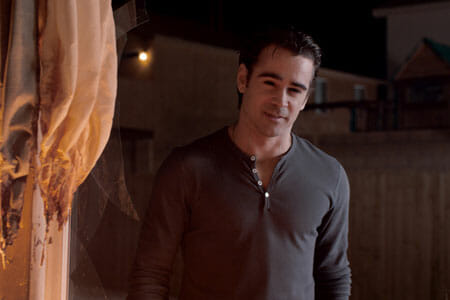
I went into the 2011 Fright Night remake not expecting very much, and came out pleasantly surprised. It’s one of the better modern vampire movies to get left out of conversations on modern vampire movies, presumably because it’s a remake, but this Fright Night is undoubtedly its own film. Colin Farrell is frankly spectacular as “Jerry the vampire,” a character who positively radiates smarmy menace from the moment we meet him. Anton Yelchin is likable as this go-round’s protagonist, but the film is really all about Farrell and a great supporting turn from the Tenth Doctor himself, David Tennant, as magician Peter Vincent. The FX and gore feel visceral and suitably icky, but it’s the moments of Farrell confidently stalking his way through the sets that should win over fans of the original. He seems so very in-control and completely invested in the little details of his character that his modern, hedonistic vampire transcends stereotypes of the genre to be one of the most genuinely threatening and capable ghouls we’ve seen in the past decade. —Jim Vorel
47. Byzantium (2012)Director: Neil Jordan

Ten years after bringing studly vampires to the forefront of pop culture with the Anne Rice adaptation, Interview with a Vampire, Irish director Neil Jordan returns to the world of the bloodsuckers with the female-themed Byzantium. Starring Gemma Arterton and Saoirse Ronan as a mother-daughter vampire team on the run, the film trades in the warm hue of the New Orleans nightlife for the cold expanse of an Irish coastal town. Upon taking refuge in a rundown hotel, Eleanor (Ronan) falls in love with a young, sickly boy. Desperate for someone to share her secrets with, Eleanor weaves him the story of how she and mother came to be on the lam. Predictably, the film’s major strength emerges whenever Arterton and Ronan share the screen. What’s most impressive is how the two manage to somehow sell their mother-daughter dynamic despite only being eight years apart in age. Unfortunately, the rest of the film suffers from a unfocused script and several listless sequences. Still, Jordan knows how to put together a cool-looking movie and Byzantiumrepresents one of his most stylish excursions to date. —Mark Rozeman
46. Stake Land (2010)Director: Jim Mickle
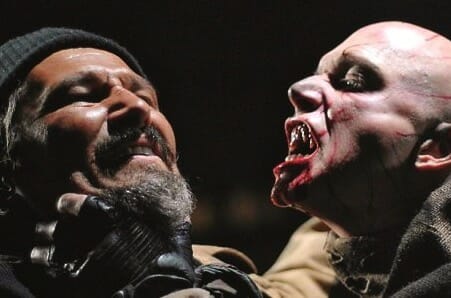
Take Romero’s classic Day of the Dead, put it above ground, and swap out the brain-eating undead for the bloodsucking variety. But play the whole thing way straighter. Also, shoot the apocalyptic setting for maximum atmosphere… You know what? Forget Day of the Dead. Jim Mickle’s vampire wasteland road trip is a pretty damned original genre mash. Like 30 Days of Night, the majority of vamps here are feral beasts—the kind that require any living survivors to gravitate toward a badass undead killer like Mister (Nick Damici, who also co-wrote). Like Mickle’s similarly visually striking follow-up, We Are What We Are, Stake Land is a beautiful—if narratively flawed at times—slice of horror for those who like to sink their teeth into some spectacular cinematography on the side. —Scott Wold
45. The Last Man on Earth (1964)Director: Ubaldo B. Ragona
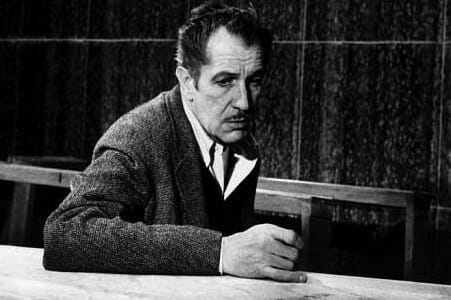
Richard Matheson’s 1954 novel has had three adaptations and three disservices to its source material, which pains me to write, because The Last Man on Earth still has a lot of other great things going for it—foremost among them, Vincent Price. The great Price plays Dr. Robert Morgan, the titular last man, who spends all his waking hours of sunlight hunting vampires who were created by a plague that wiped out humanity. Unlike the 2007 adaptation with Will Smith, we actually are introduced to some moral ambiguity with his character when it turns out the vampires aren’t quite as monstrous as he may have believed. Rather, they’re capable of being quite intelligent and civilized, although the lesser ones have the mindlessness of zombies—the film was actually a fairly prominent influence on Romero’s Night of the Living Dead a few years later, with its protagonist holed up in a house with monsters on the doorstep. It combines the atmosphere and gothic beauty of a Hammer Horror film with the bonus of Price hamming it up as a vampire-killing doctor prone to philosophizing. It’s clear, by the way, that these creatures actually are vampires, unlike in I Am Legend, where their sunlight sensitivity is really the only sign. Here it’s the whole shebang: Garlic, sunlight, mirrors, it’s all there. —Jim Vorel
44. The Brides of Dracula (1960)Director: Terence Fisher
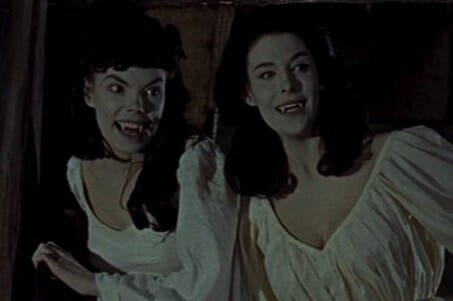
For the first Hammer sequel to 1958’s instantly iconic Horror of Dracula, the studio was unable to wrangle Christopher Lee into reprising the role—something they’d have much more success with in the future. Rather, they set out to make a film about the cult and brides of Lee’s take on Dracula, in a film that sometimes has more in common with the Bram Stoker novel than the movie that preceded it. Peter Cushing thankfully returns to lend a steady hand as vampire hunter Van Helsing, bringing his usual refinement and conviction to the role. He’s actually a real badass in this one too, staking the undead and even devising a rather gruesome home remedy for vampire bites at one point. The plot is a little circuitous and it’s undermined a tad by having a villain who comes across as a foppish “Count Dracula” clone, but the titular vampire brides are a highlight, as is the campiness of Cushing bringing his thespian talents and zeal to the role. It’s a sequel with less gravitas than the original, which is what you’ll get when the trailer advertises the female lead as “France’s latest sex kitten.” —Jim Vorel
43. Day Watch (2006)Director: Timur Bekmambetov
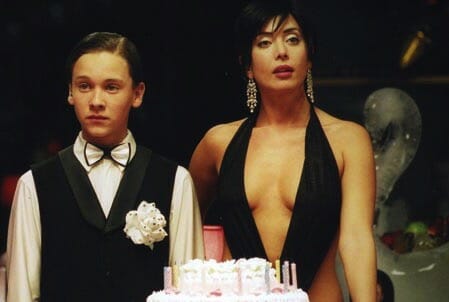
Day Watch is the sequel to Night Watch in which we learn that the world is in balance because of a centuries-old truce between the dark-siders and the light-siders who live amongst we clueless mortals. The truce is strained when one of the light guys, Anton, is suspected of murdering a couple of dark side vampires while searching for the mystical “Chalk of Fate.” He’s also looking for his son who has gone to the dark side. And he’s dealing with temporarily inhabiting the body of a woman who used to be an owl. Needless to say, Day Watch can be a tad confusing despite the fact that we are quickly updated on what happened in the first film. But the acting is superb, the dialogue is incredibly sharp and humorous, and the effects are amazing. Even the subtitles are entertaining as the words change color, bounce and crash into pieces. —Tim Basham
42. Mr. Vampire (1985)Director: Ricky Lau
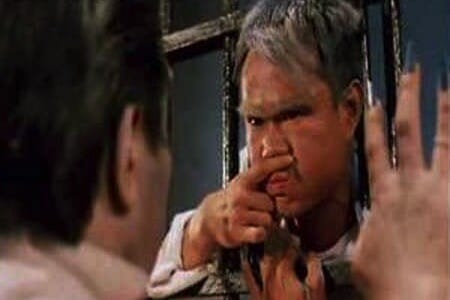
This flick will, within moments, have you checking your drink to be sure you haven’t been drugged. Responsible for first bringing the so-called jiangshi subgenre into vogue in Hong Kong filmmaking, Mr. Vampire is an utterly bizarre but compellingly original creation that blends a classic kung fu movie with horror and elements of ancient Chinese folklore/mythology. The vampires in question (there’s more than one) are the Eastern variety of “hopping” vamp, which move by holding their arms straight out in front of them and jumping around with little bunny hops. Oh, and you can repel them by holding your breath. The movie is a cinematic fever dream, which a few seconds of the trailer, with its flying heads and hopping vampires, should make abundantly clear. This is about the furthest a cinematic vampire can possibly travel from the Lugosi stereotype, and the results are hilariously strange. —Jim Vorel
41. Afflicted (2013)Director: Derek Lee, Cliff Prowse
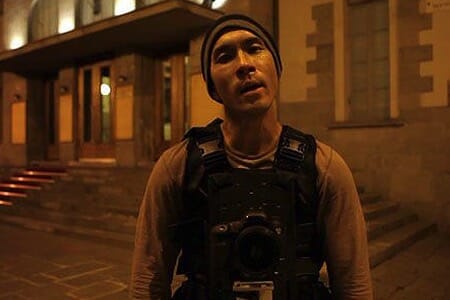
Shot on a shoestring budget with minimal crew, Afflicted is a masterclass in resourcefulness. The story follows two Canadian travelers (played by the film’s writing/directing team Derek Lee and Clif Prowse) as they trapeze through Europe. During a drunken hook-up, however one of them begins demonstrating bizarre symptoms, including an aversion to sunlight, unnatural strength and a hunger that no food can satisfy. Think An American Werewolf in London as a found-footage film (albeit, with more of a serious tone) and you have some idea of what to expect. It’s a wonderful gem of a movie for any horror fan and more than enough reason to look forward to Lee and Prowse’s future projects. —Mark Rozeman
40. The Monster Squad (1987)Director: Fred Dekker
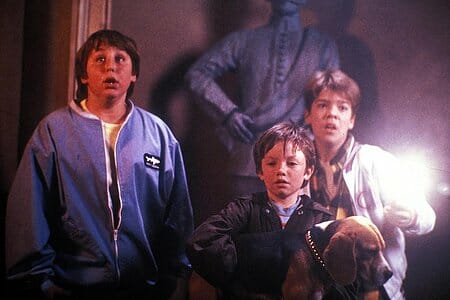
It was always obvious Count Dracula (Duncan Regehr) would be the leader: After all, it’s the vampire royalty who was once famous-monster-hunter Abraham Van Helsing’s arch nemesis, who assembles all the old Universal Monsters to help him plunge the world into eternal darkness, who would never in a million centuries let some snot-nosed dork kick him in the “nards” (unlike the Wolfman, who was kicked in the nards—hard). Fred Dekker’s The Monster Squad affirms the classic notion that the Grandaddy of all vampires would also be the most nefarious of all the classic Hellspawn, demonstrating his serious leadership material should the time ever come to rally the supernatural heavyweights and show the humans what’s what. Yup, the film even alludes to the Holocaust—the implication being that Count Dracula is worse than Hitler. So who better to face a small group of pubescent boys with slingshots and no combat training than the original source and mid-’80s manifestation of all evil on earth? —Dom Sinacola
39. 30 Days of Night (2007)Director: David Slade
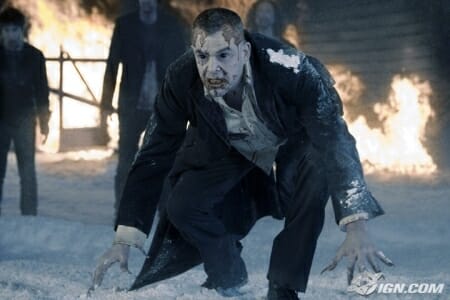
With sparkly, emo vampires being all the rage amongst tweens and slash/fic enthusiasts at the time, the big screen adaptation of Steve Niles and Ben Templesmith’s comic book miniseries, 30 Days of Night, could easily be seen as something of a balm for true horror fans. There are no tragic or misunderstood monsters as far as the guyliner’d eye can see; the vampires here—led by Danny Huston’s vicious Marlow—are savage, pitiless, bloodsucking ghouls. Despite the unfortunate blank space in the center of the film where town sheriff Josh Harnett’s command of the screen should be, the movie faithfully captures the source material’s terror of a small Alaskan town falling prey to ravenous creatures, and dawn is an entire, excruciating month away. —Scott Wold
38. From Dusk Till Dawn (1996)Director: Robert Rodriguez
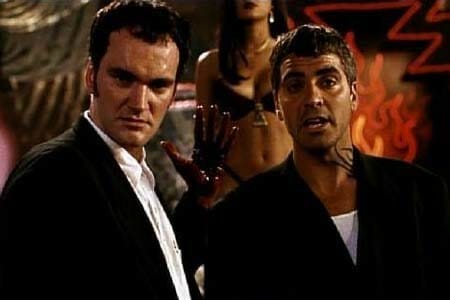
I can’t help but wonder, watching From Dusk Till Dawn, what the film might have looked like if Robert Rodriguez wrote it as well, rather than Quentin Tarantino. Would the Mexican vampire element have been introduced before the halfway mark? Probably. But there’s Tarantino for you, not content to tell one story—instead, he delivers what almost becomes two entirely separate movies starring the same characters. In the first half we get a crime dramedy about a pair of sociopathic brothers on the lam, taking hostages down the Mexico. When they finally get there, the switch flips and it turns into a gory vampire western. Both halves are entertaining in their own way, although genre purists who went in expecting a vampire film were probably perplexed by the lead-in to the payoff. That payoff is satisfyingly pulpy, though, and there’s a certain pleasure in going back to see the earlier era of George Clooney, when he thought the idea of fighting Mexican vampires seemed like a good career move. We never get all that much background on the vampires themselves, except the suggestion that they’ve been around for a good long while, just waiting for a chance to go up against Tom Savini wielding a codpiece gun. —Jim Vorel
37. The Addiction (1995)Director: Abel Ferrara
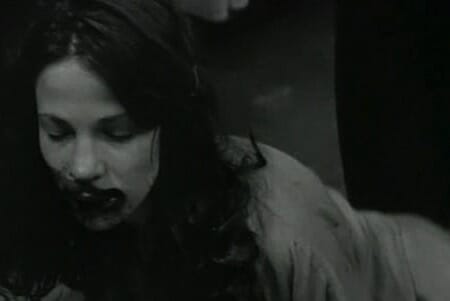
Lili Taylor stars as Kathleen Conklin, an NYU student who one night finds herself attacked and bitten by a female vampire. Being a philosophy student (and because this is a Abel Ferrara joint), Kathleen quickly takes her deteriorating condition as a cue for existential ruminations. Tapping into the foreboding grittiness of the New York setting, Ferrara uses vampirism as a stand-in for the decay that comes with the likes of modern metropolitan living and drug addiction. (Conklin is even recommended William S. Burroughs’ Naked Lunch at one point.) As with every Ferrara production, this is no light affair, but it nevertheless stands as one of the director’s best, most essential works. —Mark Rozeman
36. Interview with The Vampire: The Vampire Chronicles (1994)Director: Neil Jordan
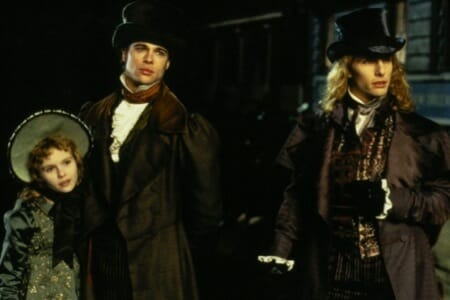
Anne Rice’s 1976 gothic novel about bloodsuckers in Spanish Louisiana got the epic big-screen treatment almost two decades after its debut, and 200 years after its narrator Louis’ induction into the immortal realm. New Orleans—home to many “cities of the dead” or above-ground cemeteries, due in part to the plagues that ravaged late 18th century slums—is also the perfect setting for a grief-stricken, navel-gazing young plantation owner like Louis (played by Brad Pitt) to lose himself. Preening and stalking his way through the streets, Louis’ maker and lead vamp Lestat (Tom Cruise) embodies an otherworldly decadence and European sophistication. Cruise, whose casting was initially criticized by Rice herself, nails it as a glib, undead dandy. A preteen Kirsten Dunst steals scenes as a spitfire orphan-turned-ageless bloodsucker, while Antonio Banderas and Stephen Rea terrify in their limited screen time. Director Neil Jordan, working with cinematographer Philippe Rousselot and production designer Dante Ferretti, captures their nocturnal existence in hedonistic hues and the light of lanterns strewn throughout the French Quarter, a universe that still stands frozen in time. —Amanda Schurr
35. Let Me In (2010)Director: Matt Reeves
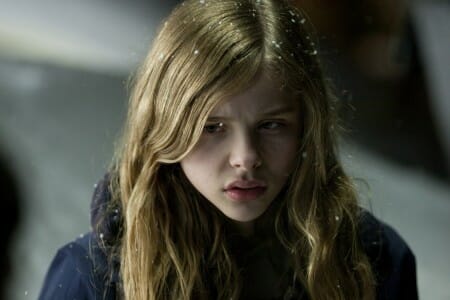
Practically more supernatural a creature than its starring monster, Let Me In is not only an Americanized adaptation of a foreign film that isn’t a waste of everyone’s time, it’s arguably superior than the film it’s based upon. Like the original Swedish film, Let the Right One In, Matt Reeves’ update teases a remarkable amount of tension and intrigue through meticulous plotting and arresting imagery. Though set in Los Alamos, New Mexico, rather than Stockholm, the choice of place for relocation initially seems an odd one—but it turns out it’s not the icy Swedish darkness that harbors the sense of unease. It’s the isolation of a 12-year-old boy, neglected by parents and any real parental figure. Owen’s (Kodi Smit-McPhee) bond with the eternally youthful vampire Abby (Chloë Grace Moretz) is as effective and chilling here as it is in the original, thanks in no small part to its two phenomenal young leads. No question there’s a modern horror classic here, from the unlikeliest of origins. —Scott Wold
34. The Lost Boys (1987)Director: Joel Schumacher
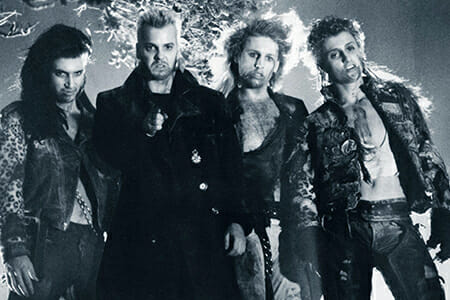
If vampires are among the original heartthrobs, it makes all the more sense for Joel Schumacher—he of Brat Pack and other generic onscreen glossiness—to have doubled down with a Tiger Beat collage of ’80s teen idols: Jason Patric, Kiefer Sutherland, Jami Gertz and the Coreys (Haim and Feldman). Patric and Haim are siblings who sense something is amiss in their new coastal California town, where a lot of people have gone missing lately. While Patric’s Michael falls in with hottie Star (Gertz) and her gang leader/vamp BF David (Sutherland), Haim’s Sam bonds with the nerdy vampire-hunting Frog brothers, Edgar and Allan (get it?), at the local comic book store. It’s super slick, cheesy and a nostalgia trip for the pre-Twilight generation. Schumacher scores bonus points for casting Dianne Wiest as a newly single mom, Edward Herrmann as her suspicious new suitor, and Barnard Hughes as the boys’ curmudgeonly gramps. Despite its titular hat tip to J.M. Barrie, The Lost Boys is about as deep as a baby’s premolars, but don’t let that stop you from “vamping out.” —Amanda Schurr
33. Trouble Every Day (1987)Director: Claire Denis
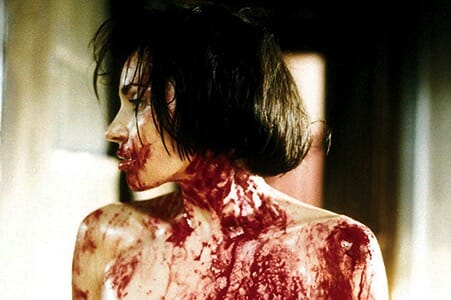
With a filmography that includes socially conscious, lyrical dramas such as Chocolat, Nenette and Boni and White Material, nothing about French filmmaker Claire Denis’ career suggests her capable of making a gory, hardcore horror flick wherein, at one point, a bout of oral sex turns very deadly. Yet, that’s precisely what happened (to the disappointment of many critics) with the equally lyrical, yet fantastically gruesome Trouble Every Day. Vincent Gallo stars as a young newlywed who arranges his honeymoon with the express purpose of meeting up with a colleague’s beautiful, yet sick wife. Eventually, it becomes clear that the wife is (literally) bloodthirsty, and Gallo’s character soon enters her orbit. Sure, the antagonist is not a “vampire” in the traditional sense, but it’s clear that Denis and co-screenwriter Jean-Pol Fargeau are toying with vampire lore and the sexual connotations therein. Certainly not a film for all tastes, but one that will linger in any viewer’s mind long after credits have rolled. —Mark Rozeman
32. Bram Stoker’s Dracula (1992)Director: Francis Ford Coppola
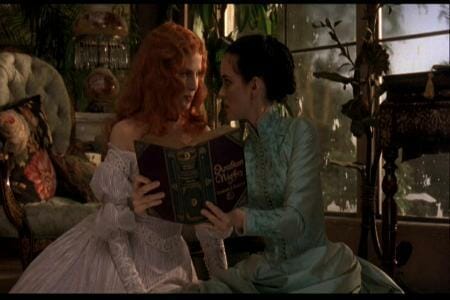
Based on the 1897 Gothic horror classic, Francis Ford Coppola’s unabashedly over-the-top adaptation is at times as chuckle-worthy as it is impressive. The period detail and production design is sumptuous, and the traditional, non-CGI special effects—a deliberate nod by Coppola to the novel’s turn-of-the-century origins, which coincided with early filmmaking—are the stuff of lavish spectacle. Be it Gary Oldman (relishing the role, and some masterful makeup) as the soulful but ruthless bloodsucker, Winona Ryder as his long-lost love, or Anthony Hopkins as the equally storied Dr. Van Helsing, nothing about the film or its performances is subtle—and that’s before we get to Keanu Reeves. Try as he might as the British lawyer fiancé to Ryder’s Mina, Reeves can’t help but flail onscreen, a Ted out of water among an ensemble that also includes Richard E. Grant, Cary Elwes and a marvelous Tom Waits as R.M. Renfield. When Coppola’s overwrought romantic vision works, it’s intoxicating. When it doesn’t, it’s an operatic circle jerk, albeit a still riveting one. —Amanda Schurr
31. Night Watch (2004)Director: Timur Bekmambetov
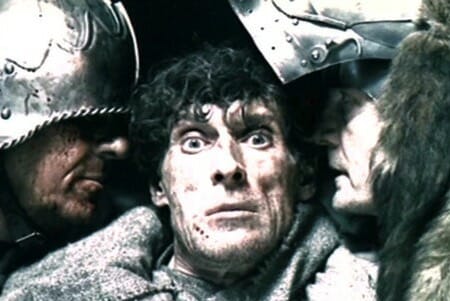
A huge hit in its native Russia, Night Watch is a preposterous celluloid Rorschach blot, the backstory and main narratives of which are too feverishly convoluted to summarize. But it works. As an epic about Good and Evil warriors scrapping on the streets of modern Moscow, the film is blissfully free of faux history lessons from the Obi-Wan and Elrond School of Film Exposition. The audience is tossed into a 1,000-year conflict involving witches, curses, vampires, shapeshifters and hypersonic public-utility vehicles and told to sink or swim. Thus, Night Watch feels like Harry Potter’s first week at Hogwarts—crammed with the giddy culture shock of constant discovery.—Michael Marano
30. Cronos (1993)Director: Guillermo del Toro
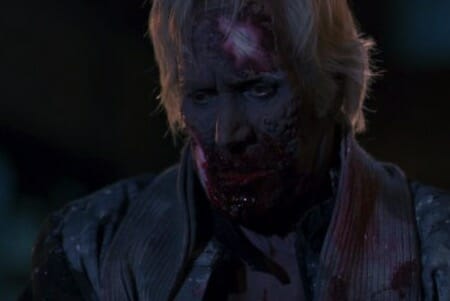
Even working with a small budget in his first feature film, the vitality of Guillermo Del Toro’s imagination was immediately on full display in Cronos, his Mexican vampire horror drama. Reflecting themes and visual elements that the director has continued to refine in The Devil’s Backbone, Pan’s Labyrinth and Crimson Peak, Cronos is a simply told but visually striking story about an antique shop owner who is slowly and unwittingly transformed into a vampire-like creature after a 450-year-old mechanical device clamps onto his arm and refuses to let go. At first he enjoys the new vitality of the transformation, before other parties come hunting for the device, turning the movie into almost a vampire crime story, as it were. Regardless, Cronos features a very sympathetic vampire at its core, an old man who is simply thrilled by what at first appears to be a new lease on life but eventually requires deadly sacrifices. It’s certainly not Del Toro’s most spellbinding feature, but it was an excellent debut. —Jim Vorel
29. Dracula Has Risen From the Grave (1968)Director: Freddie Francis
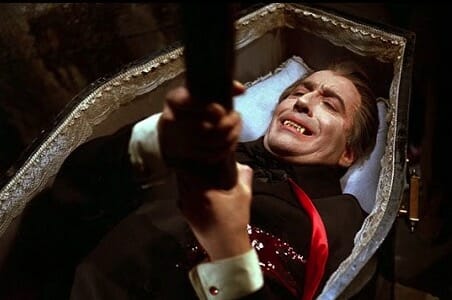
My personal favorite title of the Hammer Dracula sequels, just narrowly edging out Taste the Blood of Dracula, may also be the best of the sequels overall. It’s a fresh take on the story, rather than another rehashing of the Van Helsing/vampire hunter story, centered around the romance of a young couple, including Hammer Horror bombshell Veronica Carlson. The young protagonist Paul (there always seems to be someone named Paul in these movies) makes a very unusual vampire killer for one reason in particular—he’s an atheist! Therefore unable to use the powers of faith and holy symbols (the cross, holy water, etc.) as weapons, he’s at a severe disadvantage as a bloodshot-eyed Christopher Lee targets his bride-to-be. Another thing that stands apart in Dracula Has Risen From the Grave is Hammer’s apparent intent to create a “sexier,” more adult-charged atmosphere for the film and the series. More care seems to have been put into sexualizing the characters, which amps up the gothic romance in an appealingly cheesy way—just look at the poster, for god’s sake. Ravishing! This is the last of the “classical”-feeling Dracula movies in the Hammer series—after this, they get progressively weirder. —Jim Vorel
28. Blacula (1972)Director: William Crain
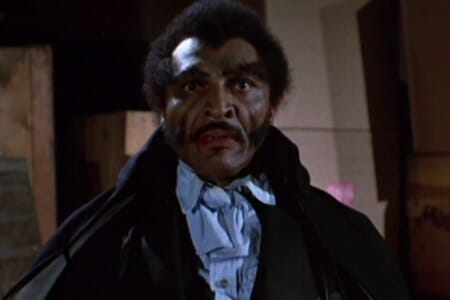
The production of Blacula is decidedly on the low-budget and gritty side, but you can at least say it’s a better film than the silly title might suggest, and much better than the other blaxploitation horror flicks it inspired such as the godawful Blackenstein. Also unique: You’re probably not going to find another film on the list where the rampaging vampire is released because a pair of gay interior decorators buy his Transylvanian coffin as a furnishing for their L.A. apartment. The actual vampire is Mamuwalde, an African prince of some kind who was vampirized by Dracula for daring to seek his help in stopping the slave trade in 1780. In doing so, you establish a classic blaxploitation anti-hero—even if he’s killing people in L.A. to stay alive, Mamuwalde is immediately lionized with the title of freedom fighter and liberator. The movie is also a soul-gothic story of doomed lovers, reincarnated over the centuries in the style of The Mummy. It’s quite the hokey watch in 2019, but with the right crowd—especially film fans who are blaxploitation-savvy—it’s an indispensable slice of the early ’70s urbanization of horror. —Jim Vorel
27. Black Sabbath (1963)Director: Mario Bava
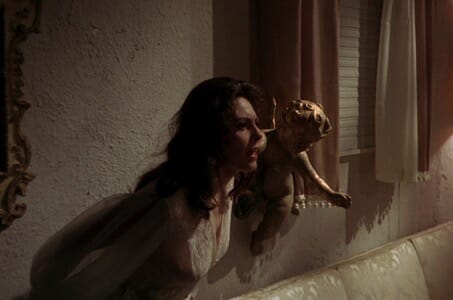
There was once a time before “Black Sabbath” merely conjured up images of Ozzy Osbourne caterwauling about an “iron man,” “war pigs” or being paranoid over the sounds of Tony Iommi shredding. Indeed, the band in question famously took their name from this celebrated anthology film, which spins three tales of Mario Bava-directed horror. The middle chapter, “The Wurdulak” stars horror icon Boris Karloff as a man who sets out to slay an undead creature (the titular “wurdalak”). To say anymore would be to spoil this fascinating and subversive take on the vampire story. An absolute essential totem of the horror genre. —Mark Rozeman
26. Blade (1998)Director: Stephen Norrington
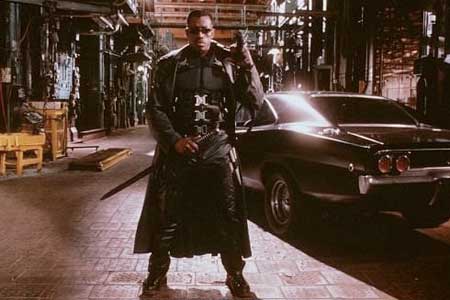
History seems to have forgotten that the modern gold rush of “serious” Marvel comic book movies didn’t begin with Sam Raimi’s Spider-Man in 2002, or even Bryan Singer’s X-Men in 2000. In 1998, screenwriter David Goyer (The Dark Knight Trilogy) and director Stephen Norrington (uhh… The League of Extraordinary Gentlemen), brought a Marvel property to the big screen, and took full advantage of a hard-R-rating. Likely because of not being one of the comic giant’s better-known characters, the filmmakers were able to make significant changes to the Daywalker, upping his coolness level since his debut in 1973’s Tomb of Dracula by about, say, a thousand-jillion percent—starting with casting Wesley Snipes, who absolutely crackles with badass-ness. This version of the half-vampire is the ultimate predator or predators who, along with his guru/weaponsmith Whistler (the awesomely grizzled Kris Kristofferson), slices and stakes his way through the secret vampire society. The history of this world’s vampires and their various castes is well-explored—and strangely believable. While they do clandestinely rule from the shadows, they unfortunately are (un)dead meat to our titular dhampir, and look nowhere as stylish wearing shades. —Scott Wold
25. The Hunger (1983)Director: Tony Scott
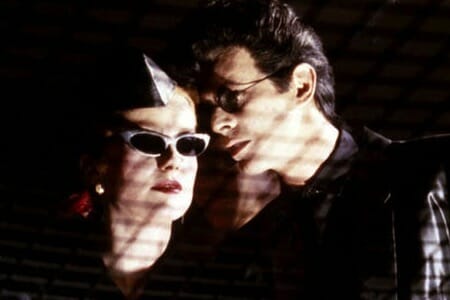
As famed for its Sapphic sensuality as for its all-star cast, Tony Scott’s hyper erotic thriller—his first theatrical feature—is more stylish than it is scary. But oh, what style. Catherine Deneuve works her icy elegance to great effect as the eons-old temptress who’s tiring of her latest lover/meal, David Bowie, who in turn approaches Susan Sarandon’s doctor about a cure for his rapid bout of Dorian Gray-type aging. Doc meets bloodsucker, and for viewers as patient as they are prurient, that closed-set scene ensues. Adapted from Whitley Strieber’s novel, The Hunger is violent and glamorous, filmed with a deathly art-house seriousness and a glacial sense of pacing. Scott’s luxurious visuals and Howard Blake’s musical direction—steeped in classical strains that paint the A-list sex and death that much more highfalutin’—make for a decidedly chic if softcore take on the vampire story. It’s no wonder Scott (three years before he’d hit it big with Top Gun) was then best known for TV commercials—Is The Hunger a movie or an Obsession by Calvin Klein ad? No matter: The film enjoys a cult following to this day, aided by the on-the-nose inclusion of the Bauhaus song “Bela Lugosi’s Dead.”—Amanda Schurr
24. Shadow of the Vampire (2000)Director: E. Elias Merhige
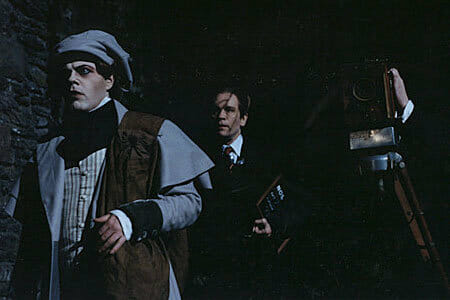
We now reach a special occasion in our vampire list. As it currently stands (and please someone correct me if I’m mistaken), Willem Dafoe remains the only actor to be awarded an Oscar nomination for playing a literal vampire. And boy, does he earn it. A love letter to fans of both horror and film history, Shadow of the Vampire recounts the shooting of F.W. Murnau’s vampire classic, Nosferatu, with an added revisionist twist—the actor who portrayed Count Orlok was an actual vampire that Murnau hired for authenticity. As the unhinged director, John Malkovich is perfectly cast, particularly in the moments where he goes off on infuriated tangents about Max’s behavior (when the vampire takes a bite of the production’s cinematographer, Murnau berates him for not eating someone more disposable like “the script girl”). The film, however, belongs to Dafoe. His “Max Schreck” is at once frightening but also wryly funny. What’s more impressive are the moments where the film incorporates scenes from the actual Nosferatu, making it hard to distinguish Dafoe’s embodiment from the real thing. —Mark Rozeman
23. Thirst (2009)Director: Park Chan-Wook
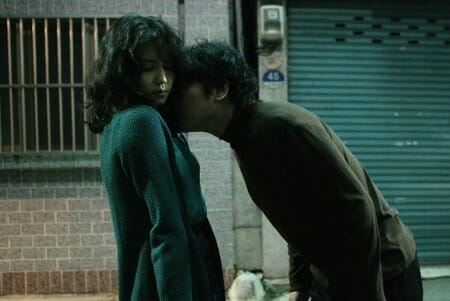
Sang-hyun (Song Kang-ho) is a devoted priest who’s punished for his devotion. In volunteering to aid with relief efforts for a deadly viral outbreak, Sang-hyun is infected, isolated and then, in a fleeting effort to save his quickly waning life, is given a blood transfusion—after which he comes back to life, mumbling the same prayer that was on his lips right before he passed away. The blood was of course vampiric, an extra step of unluckiness added to the priest’s devolution from devout to doomed, but as blessed as it may seem for him to be alive at all, even the most deep-seated vows of his pure spirit can’t stand strong against the urges of the “growling beast” rearing inside of him. Eventually, Sang-hyun falls for an abused young woman, Tae-ju (Kim Ok-bin), and together they explore what being a vampire really entails, which mostly means clinging to the fringes of civilization, trying not to kill people and having a bunch of messy sex. Bleak but thoughtful, grotesque but hopeful, Park Chan-Wook’s sleekly sad horror fable eventually reveals itself to be a romantic thriller with a love triangle at its core: between a vampire, a woman and their God. —Dom Sinacola
22. Nosferatu: Phantom der Nacht (1979)Director: Werner Herzog
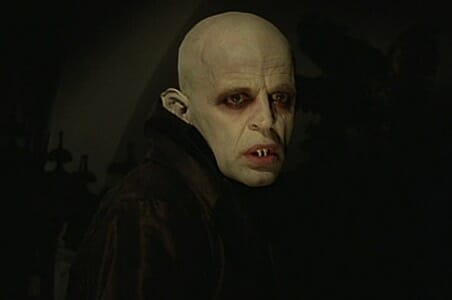
Werner Herzog recreates the cornerstone of vampire cinema (and German expressionist filmmaking, for that matter) through an ever-mounting nightmare of unsettling, disjointed vignettes. Which isn’t anything new for the German director, but his methods and sensibility do lend themselves naturally to the language of phantasmagoria, as he tells a well-known story via one subconscious-upending image after another. As in any Herzog film, the story is never intended to hold together flawlessly—only barely logically—but to imprint indelibly upon the insides of the viewers’ eyelids the stark silhouette of evil borne absurdly from the primeval fear in all of us. That Klaus Kinski also plays Count Dracula means that madness bristles at the edge of every manicured line of chiaroscuro: Nosferatu revels in the beauty of horror. In fact, Roger Ebert said, “Here is a film that does honor to the seriousness of vampires. No, I don’t believe in them. But if they were real, here is how they must look.” —Dom Sinacola
21. Ganja & Hess (1973)Director: Bill Gunn
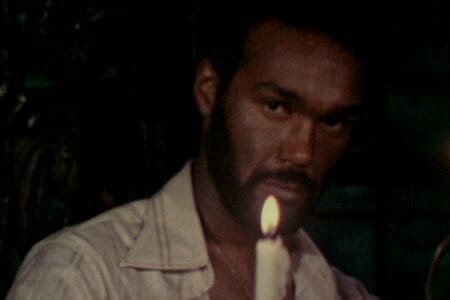
Although Blacula may serve as the definitive “black vampire” movie in the minds of many cinephiles, the experimental Ganja & Hess offers a more cerebral dive into the implications of the vampire story as it pertains to the African-American community in the 1970s. Brought to life by playwright/novelist/experimental filmmaker Bill Gun, the film centers on an aristocratic black anthropologist named Hess Green. After a fight with his assistant, Hess is stabbed by a mythical dagger and transformed into a vampire. Upon meeting his late assistant’s beautiful wife (the titular Ganja), Hess falls in love and the two begin a warped courtship. Through this deranged love story, Gunn fashions a tale ripe with parallels to black assimilation and religious hypocrisy. In a way, the film almost works more as a visual political treatise than a narrative film. Though occasional a bit overbearing in its exploration of ideas, the film remains a fascinating artistic document of its time period. And, as Spike Lee’s 2014 remake demonstrated, there are issues brought up in this movie that are still worth exploring to this very day. —Mark Rozeman
20. Valerie and Her Week of Wonders (1970)Director: Jaromil Jires
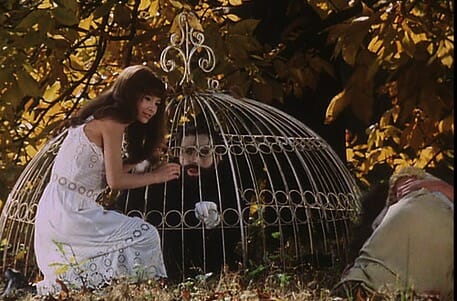
Over the course of seven days, a young girl on the precipice of womanhood is hounded by a vampire, menaced by a pervy priest, and romanced by a handsome young chap who may or may not be her sibling. That’s quite a packed slated for a 76-minute film. But the full breadth of lovely weirdness in Jaromil Jireš’ Valerie and Her Week of Wonders can’t be easily captured through any number of words. Put simply, it’s a treasure trove of delights for any lover of the surreal, and a must for fairy tale connoisseurs. (Most of all, it’s gorgeous from start to finish.) Sexual politics make up the center of this lyrical little pohádka; Valerie is both preyed on and protected by her femininity. There’s a mother lode of symbolism that can be mined out of Jireš’ work here, but the film baffles on first viewing and demands one’s utmost attention. Luckily, it has great rewatch value. —Andy Crump
19. Goke, Body Snatcher from Hell (1968)Director: Hajime Sato
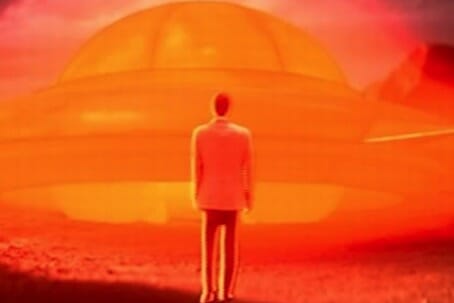
A film that must be seen to be believed, Goke holds nothing back—it boasts a use of color that is surreal in its intensity, explores blatantly heavy-handed anti-war sentiment and appears to pattern the movement of those possessed by the central monster after some frenzied kabuki routine. Most importantly—the film is a blast to watch. The set-up is simple: a plane crashes in a remote area, leaving the survivors to deal with a parasitic blob creature that transforms its victims into blood-craving vampires. While stymied by seriously dated special effects and no shortage of cheesy performances, Goke is all about execution. It’s a brash, yet ambitious bit of filmmaking that brings to mind the likes of Carnival of Souls and Toho’s House. For those who prefer their horror with an off-kilter twist, Goke is a classic just waiting to be rediscovered. —Mark Rozeman
18. Only Lovers Left Alive (2013)Director: Jim Jarmusch
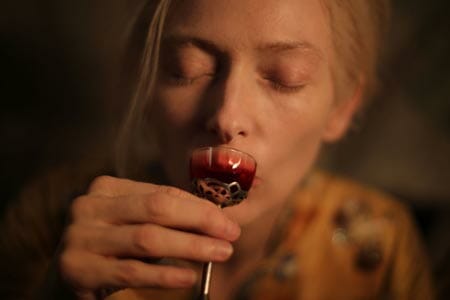
An hour into Only Lovers Left Alive, and vampire—though that word is never once uttered—Adam (Tom Hiddleston) is taking his wife, also-vampire Eve (Tilda Swinton), on a crepuscular tour of Detroit, showing her the hollowed-out Packard Plant, the once-achingly-opulent mansions now literally collapsing on themselves, the home where Jack White grew up. “Oh, I love Jack White!”, Eve responds, not a hint of hesitation or pretension in her voice. The house, a Victorian brownstone of which Detroit once boasted so many, sits alone, neck-high weeds taking up residence where finely mown lawns used to be. The city in which these two undead monsters thrill in the history of a humanity which shuns them is itself a vampiric wasteland, a vast twilight of ambition and privilege and promise reduced to the stifling of animalistic urges—still beautiful, but struggling to be more than just an echo of something once so much more vital. That Jarmusch chose to have his lovely creatures inhabit the shadows of Detroit’s endless night is a stroke of genius: It’s inhabited best by those most disengaged from it—by those impervious to the deep corporeal pain it causes. —Dom Sinacola
17. Near Dark (1987)Director: Kathryn Bigelow
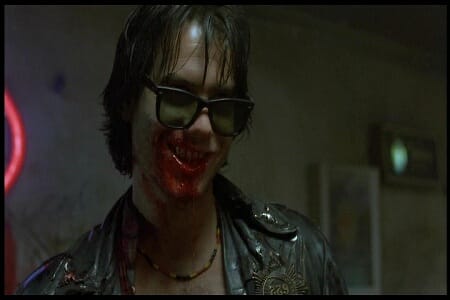
Kathryn Bigelow’s Near Dark was one of her first films with a decent budget, and she invested those funds wisely into making a stylish, moody, pulpy vampire Western with an excellent supporting cast, from the iconic Bill Paxton (whose demise is beautiful) to horror staple Lance Henriksen in one of his higher-profile appearances outside Aliens. It’s a film that really drives home the light vs. shadow, day vs. night aspect of the vampire psyche and physiology—so much of the movie involves the biker gang-like vampires laying low, hiding from both sunlight and the human police that their existence is hardly “romanticized” at all. In fact, these vampires project more of a tragic streak—outlaws who have convinced themselves that they’re living a life of freedom and immortality when their existence is actually fragile and just a blast of UV light away from being cut short. It’s like one of the many ’70s-era Hells Angels biker films—a Wild Rebels where the vampires are those doomed outsiders who live fast and die (relatively) young. —Jim Vorel
16. Dracula: Pages from a Virgin’s Diary (2002)Director: Guy Maddin
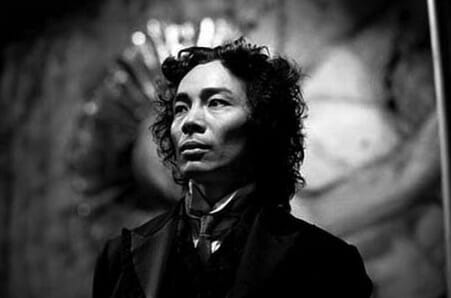
Continuing his obsession with expertly recreating older film aesthetics, Canadian auteur Guy Maddin chose to adapt the Royal Winnipeg Ballet’s performance of Bram Stoker’s Dracula by shooting the production in the mode of a silent film, complete with title cards, tinted screen and Vaseline-infused blurriness. What’s more, Maddin juxtaposes this archaic format with a more modern sensibility, filming the dance sequences primarily in close ups with added jump cuts. Moreover, in the role of Dracula, the production cast an Asian man, emphasizing the story’s potential xenophobic themes. All these strange artistic choices somehow add up to a enthralling whole, making Pages from a Virgin’s Diary one of the most audacious and powerful adaptations of Stoker’s work to ever be put to film. —Mark Rozeman
15. Nosferatu (2024)Director: Robert Eggers
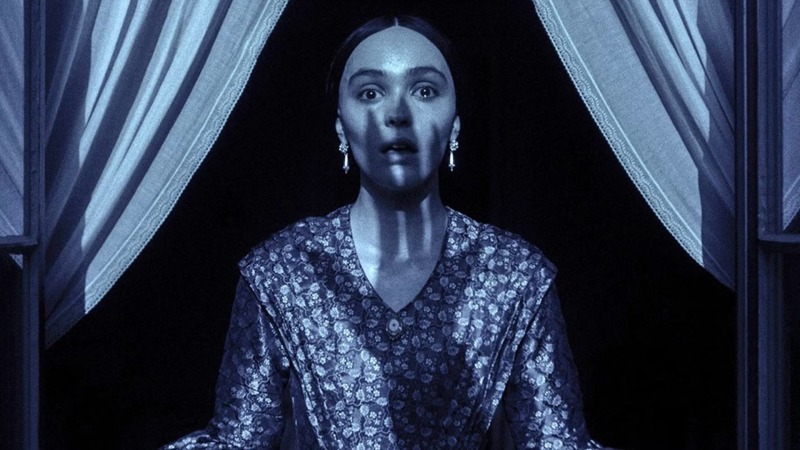
What a strange yet hypnotizing task, the business of remaking Nosferatu, only slightly mitigated by the fact that it’s been done before. F.W. Murnau’s original 1922 silent film, subtitled A Symphony of Horror, adapted Bram Stoker’s novel Dracula without permission before the authorized 1931 edition (and is not especially less faithful to the novel than that early Universal Horror classic); then, in 1979, Werner Herzog remade the film as Nosferatu the Vampyre, a more verdant, eerily quiet version, expertly suffused with the grim unease that it could be taking place closer to our world.
That sense of creeping inevitability bleeds into the 2024 edition of Nosferatu, adapted by Robert Eggers – whose film that comes closest to a contemporary setting, The Lighthouse, takes place around the time Stoker’s novel was published. His Nosferatu echoes its official source, as the earlier film echoed its inspiration: In the nineteenth century, Thomas Hutter (Nicholas Hoult) travels to the remote castle of Count Orlok (Bill Skarsgård), in the scenic Carpathian Mountains, to complete a real-estate transaction. Orlok becomes entranced by a photo of Thomas’s wife Ellen (Lily-Rose Depp), and when he makes his way to his new home, he brings vampiric pestilence with him as he stalks his adopted hometown, and Ellen in particular, with a kind of rigorously evil devotion. To call it love or even lust would not quite do justice to the totemic figure he cuts. This Orlok is neither the beastly, rodent-like version played by Max Shreck nor the elegant, be-caped Bela Lugosi. Get ready for a main vamp with a beard more prominent than any fangs, somewhere between a lumberjack and a living tree. This Orlok gives the impression of a vampire who audibly gulps down blood not exactly out of hunger, but to collect and taste what he lacks. —Jesse Hassenger
14. Martin (1977)Director: George Romero
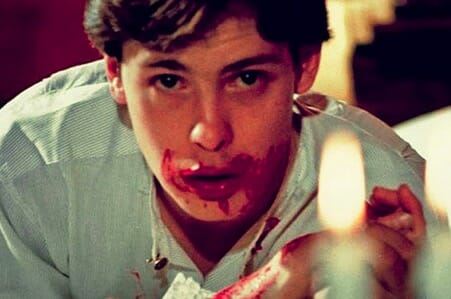
After bringing zombies to the cultural forefront with Night of the Living Dead, George A. Romero turned his brand of horror-commentary to the vampire. In doing so, the director crafted a film that was less direct horror and more of a warped character drama. The central figure/enigma of Martin is the titular character, a pasty young man who is convinced—despite his lack of fangs or any discernible symptoms—that he is a vampire with a need to feed. Is Martin a legitimate bloodsucker or merely a delusional psychopath with a bloodlust? It’s a question that propels the narrative, but, on the whole, the answer doesn’t especially matter. In many ways, Martin’s actions, particularly his violence against women, serves as Romero reflecting on man’s own destructive primal urges and the brutality that occurs when they are left unchecked. Whereas most horror movies clearly delineate between the righteous heroes and the monsters that must be vanquished, Martin posits much deeper questions, pushing viewers to contemplate the darkness that lies within us all. —Mark Rozeman
13. Let’s Scare Jessica to Death (1971)Director: John Hancock
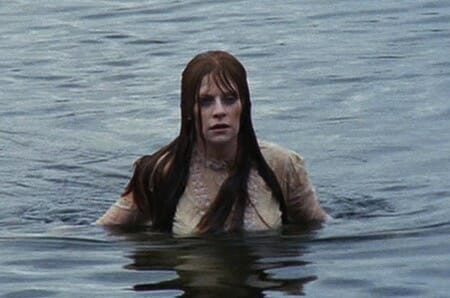
Don’t let the somewhat flippant title ward you off—Let’s Scare Jessica to Death, with its isolated setting and emphasis on paranoia and psychological horror, plays like some sort of lost Polanski film. There’s no major blood or gore; rather, it’s all about atmosphere and creating an eerie sense of unease. The titular Jessica is a young woman newly released from a psychiatric facility who, along with her husband and a friend, relocates to a remote farm. Once there, she hears the tale of a woman who drowned in the nearby lake and now haunts the area as a vampire. Soon Jessica begins to wonder whether the vampire is after her or if she’s simply falling back into her mental delusions. Jessica is the type of horror film that gets under your skin and won’t leave for days after. To put quite frankly, it’s a forgotten classic waiting to be retrieved from obscurity. —Mark Rozeman
12. What We Do in the Shadows (2014)Director: Taika Waititi
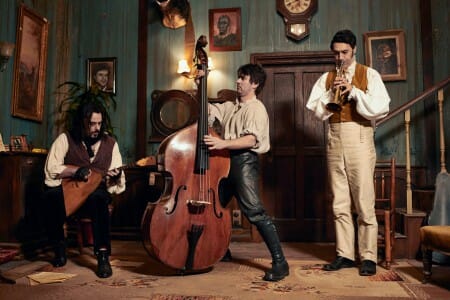
Just when you thought the proliferation of a certain breed of network sitcoms had all but killed the “mockumentary” format, along comes a film like Taika Waititi’s gut-busting What We Do in the Shadows to prove that the subgenre can still be done with dexterous skill and great panache. Centering on a quartet of vampire flatmates (among them, Jemaine Clement, in one of his funniest roles) who range in age from a spry 183-year-old to a degenerated Nosferatu-esque figure clocking in at eight millenniums, the film documents the group’s attempt at adjusting to modern life, whether it’s wrapping their head around the latest technology, learning how to dress like they belong in this century or navigating millennial club life. Not since the heyday of Christopher Guest has a mockumentary so thoroughly made good on its comedic premise. —Mark Rozeman
11. A Girl Walks Home Alone at Night (2014)Director: Ana Lily Amirpour
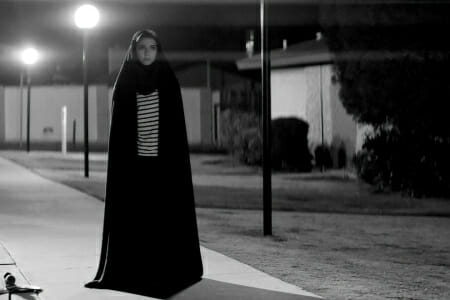
Most vampire movies aspire simply to entertain. Once in a while, a director uses the medium to make a statement about society, sexuality, materialism, etc.—all to varying degrees of success. In some rare, special cases, however, a movie comes along that transcends the genre and become something approaching legitimate, potent art. A Girl Walks Home Alone at Night sufficiently fits into that latter characterization. It’s a dazzling and supremely confident debut from director Ana Lily Amirpour, marking her as a potential successor to the likes of art-horror craftsman like Polanski and Cronenberg. Set in an Iranian ghost town, the story follows several disenfranchised residents as they encounter a mysterious, chador-clothed woman who turns out to have a mighty big pair of fangs. Photographed in sumptuous black-and-white with a thrilling electro-pop score, the film firmly establishes itself as a new gold standard for arthouse horror features. —Mark Rozeman
10. Blade II (2002)Director: Guillermo del Toro
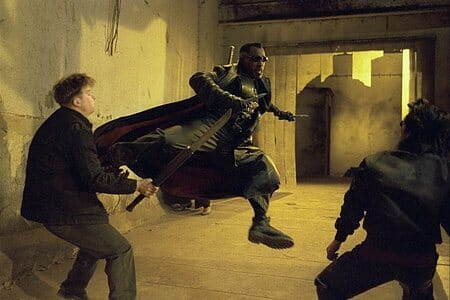
Leave it to gothic horror maestro extraordinaire Guillermo del Toro to take our unstoppable vampire hunter and crank the style past 11, and playing up the comic book craziness to the tilt. Arguably even more enjoyable than its predecessor, Blade II sees a fragile alliance between Blade and the Bloodpack—basically, the Dirty Dozen of vampires, as they face off against Reapers—super-vampires who enjoy them some tasty vampire blood. Great new characters in the ’pack, and since this is a del Toro joint, there’s 100% more Ron Perlman. And that’s never not an improvement. —Scott Wold
9. Sinners (2025)Director: Ryan Coogler
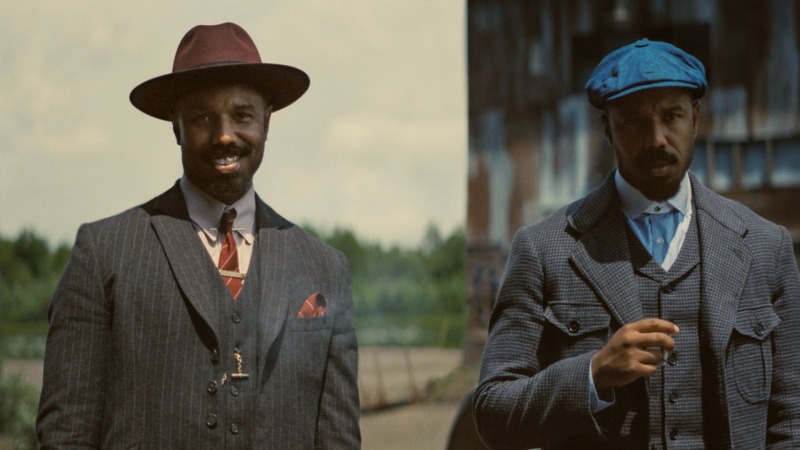
Give it to writer/director Ryan Coogler (Fruitvale Station, Black Panther) for coming at Sinners, his first horror feature, with the intentionality of a PhD student with something to prove. There’s no shortage of existing lazy or derivative vampire movies that he could have easily bested with modest effort. Instead, Coogler cracked the history books, collected his A-list family of collaborators, including composer Ludwig Göransson, production designer Hannah Beachler, director of photography Autumn Durald Arkapaw, costume designer Ruth E. Carter and ever-trusted leading man Michael B. Jordan, to cinematically (with a capital C) transport the audience to a 1930’s Jim Crow Mississippi ripe for all kinds of delicious trouble.
Coogler’s Sinners screenplay is original but it most certainly carries the baton for what Misha Green explored in her mashup of horror, the supernatural and Black oppression in her HBO series, Lovecraft Country (2020). Although that series was ultimately too broad with its ambitions, Coogler wisely stays hyper-focused on just two monsters – the vampire and bigoted Whites who wear hoods. Coogler weaves vampiric metaphors into the societal oppression of the Old South and asks the audience to consider, which is worse? —Tara Bennett
8. Horror of Dracula (1958)Director: Terence Fisher
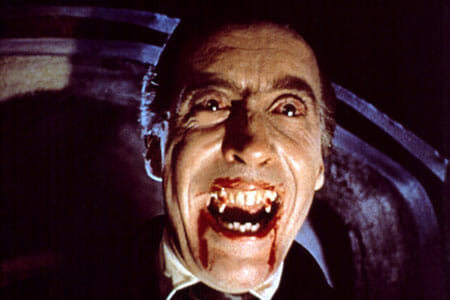
Horror of Dracula is either the second or third most iconic “classic vampire” film ever made, trailing only the 1931 Bela Lugosi Dracula and possibly the original Nosferatu. But really, if you were going to put together the ultimate, time-spanning Dracula film, you’d choose this version of the vampire, as played by the regal, intimidating Christopher Lee at the height of his powers. Horror of Dracula is simply a gorgeous movie, with lush, gothic settings—crypts, foggy graveyards and stately manors—photographed with the Golden Age charm of Technicolor. It has the best version of Van Helsing ever put to film (the aquiline, gaunt-looking Peter Cushing), some of the best sets and an omnipresent feeling of refinement and grandeur. Dracula, as played by Lee, is a creature of dualities—preferring to use very few words and simply influence through his magnetic presence, but also just moments away from leaping into action with ferocious animality. Along with Curse of Frankenstein, it’s the film most responsible for the late ’50s to early ’70s revival of classic gothic horror via Hammer Film Productions in the UK, which would produce dozens of takes on Frankenstein, The Mummy, and no fewer than eight Dracula sequels, which we’ve covered in-depth on this list. The first, however, is unquestionably the best—so effective that it typecast Christopher Lee as a horror icon for decades, exactly as Dracula did to Bela Lugosi. —Jim Vorel
7. Vampyr (1932)Director: Carl Theodor Dreyer
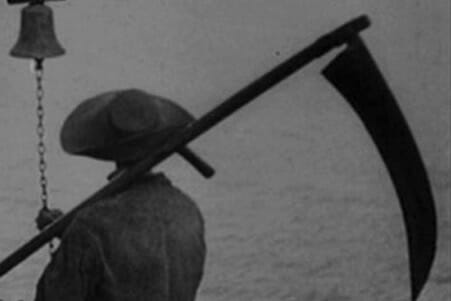
While wandering the countryside, a naïve young man with a propensity for the occult stumbles upon a castle where he learns that the owner’s teenage daughter is slowly descending into vampirism. Upon seeing the village doctor trying to poison the girl, the boy intervenes and complications, naturally, ensue. Notable as being one of the few early vampire movies not even passingly based on Bram Stoker’s Dracula, Vampyr nonetheless brought very little joy to its creator, legendary Danish director Carl Theodor Dreyer (he of The Passion of Joan of Arc). Forced to shoot the production in three different languages (French, German and English), Dreyer’s first sound film experience was a proverbial trial by fire. To add salt to the infuriating production, the film was released only after some fairly heavy censoring. The reception was no less brutal, with critics delivering scathing reviews. As the years have passed by and an appreciation for Dreyer has grown, however, so has an appreciation for the film, with many modern critics citing its subversive take on sexuality to be years ahead of its time. Shot with the delicacy and elegance of a dream, Dreyer quickly plunges the viewer into an expressionistic hellscape of shadows and dread. Though it may be a bit slow for some audiences, even with a sparse 73-minute runtime, Vampyr is a intense mood piece that picked up where Nosferatu left off. —Mark Rozeman
6. Black Sunday (1960)Director: Mario Bava
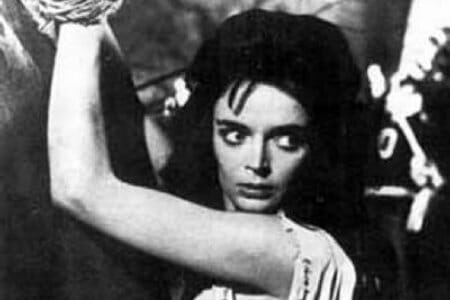
After years spent toiling as a cinematographer and (at times uncredited) co-director on an assortment of moderate to low-budget horror and sword-and-sandals productions, Mario Bava broke out in a big way with Black Sunday. Loosely (and I mean loosely) based on a short story by Nikolai Gogol, the film centers on the resurrection of a 17th century vampire-witch and her paramour as they seek revenge on the descendants of the brother who executed her. Designed as a throwback to the Universal monster movies of the 1930s, Black Sunday drew significant controversy for several gruesome sequences (including, but not limited to, the implementation of a spiked death mask and a moment where a cross is stabbed through an eye). Naturally, this kind of notoriety only intensified the film’s popularity. Though time has since lessened the impact of the gorier scenes, the movie still packs a huge punch with its nightmarish atmosphere, which is further accentuated by its vivid black-and-white photography and striking production design. An influence on filmmakers from Tim Burton to Francis Ford Coppola, Black Sunday remains a towering beast in the history of the horror genre. —Mark Rozeman
5. Dracula (Spanish version) (1931)Director: George Melford
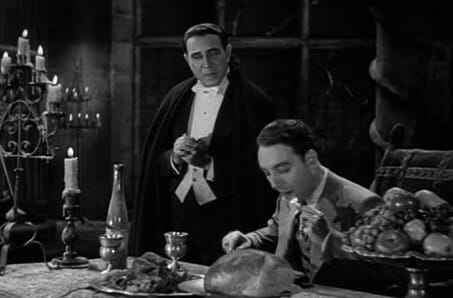
It’s crazy to imagine a film being shot multiple times, with different casts and in different languages today, but this was once common practice and thus was born the Spanish version of Universal’s classic Dracula. It features an entirely different cast—no Bela Lugosi as Dracula and Dwight Frye as Renfield-but filmed on the exact same sets, with the same script. The Spanish crew was literally filming at night, after the English language crew had gone home for the day. It’s remembered today because of the visual transformation it undergoes—director George Melford ultimately proved much more active and experimental than Tod Browning, the director of the English language version, which imbues the Spanish Dracula with significantly more interesting and challenging cinematography. Many shots that are simply static in the Browning Dracula (which is a bit of a stuffy movie, although extremely important historically) are given a new lease on life in the Spanish version. The performances are also solid, although unsurprisingly they’re nowhere near as iconic as Lugosi. Watching the Spanish version, you can’t help but wish for a third version of the 1931 Dracula—starring Lugosi and Frye, but directed by Melford. With that combination, perhaps it would be Dracula and not Frankenstein hailed as the crown jewel of the original Universal monster series.—Jim Vorel
4. Abbott and Costello Meet Frankenstein (1948)Director: Charles Barton
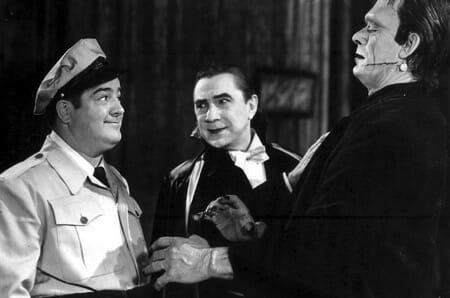
By the end of the ’40s, the classic Universal monster movie series was on its last legs. In the wake of WWII, the old monsters simply couldn’t hold up, so the studio instead turned to comedy with Abbott and Costello Meet Frankenstein while simultaneously including their most iconic monster creations. The movie is significant for being the one and only time that Bela Lugosi ever returned to play the Dracula role in a second film after the 1931 Dracula, although he played a different vampire on several other occasions. He brings his magnetic presence back to the role while also introducing more comedy, and there’s even a great little sequence where we actually see him transform into a bat via animation. The movie is great fun, with reverence both for the classic monsters and the blockbusters they starred in while also injecting levity and classic Abbott and Costello wordplay/physical comedy. It’s a must-see for fans of classic cinema and is also a great Halloween movie for kids, presuming they can be convinced to watch something in black and white. But as a vampire film, how can you say no to Lugosi playing Count Dracula one more time? —Jim Vorel
3. Dracula (1931)Director: Tod Browning
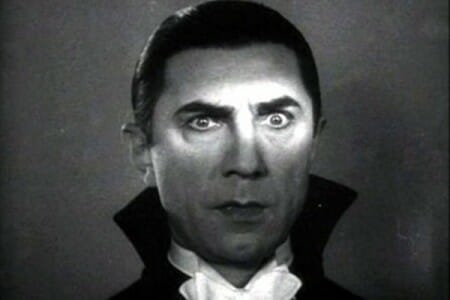
At this point, director Tod Browning’s Dracula has become such an indelible cornerstone of pop culture that it’s nearly impossible to view the film separate from its iconic standing. Yes, the film is a classic for a reason, but how does it really stand up? Let’s start with the obvious—Bela Lugosi is phenomenal in the title role, oozing charisma with an ever-present undercurrent of menace. As a studio, it’s Universal’s greatest shame that, despite perfecting his Dracula on stage throughout the late 1920s, Lugosi only secured the role after some heavy lobbying and the departure of several potential actors. In fact, the lone downside to Lugosi’s towering presence is that, when he’s not onscreen, the movie becomes significantly less interesting. That’s not the fault of the cast, who all turn in decent performances, but it’s like a talented college b-ball player playing one-on-one with Michael Jordan at his prime—even the best are bound to look amateurish by comparison. Besides Lugosi, the other MVP of the film is cinematographer Karl Freund, who complements Lugosi’s presence with a shadowy, Gothic look that would go on to haunt moviegoers dreams for decades afterward. And while the much celebrated Spanish version of Dracula unquestionably made bolder creative decisions, it’s Lugosi’s performance that elevates this production from an effective adaptation to a cultural landmark. —Mark Rozeman
2. Let the Right One In (2008)Director: Tomas Alfredson
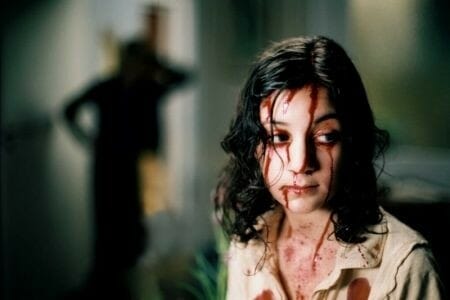
Some vampire films are scary. Some are gory. Some are visually striking. Some are cerebral. Some are emotionally resonant. A select few embody two or three of these qualities. Let the Right One In is the full package. As unnerving as it is heartfelt, John Ajvide Lindqvist’s adaptation of his own vampire-centric coming-of-age tale feels as though it should be rife with contradictions and tonal shifts. Instead, it’s a film that expertly captures both the isolation of childhood and the blush of first love. Tracking the relationship between a lonely young boy and the mysterious young vampire girl he meets and becomes infatuated with, the film takes what, in lesser hands, could easily have just been a perverse subversion of puppy love and explodes it into something as emotionally honest and universal as any movie that graces the Oscar stage. Though director/co-editor Tomas Alfredson emphasizes the bleak, cold hues of the Stockholm suburbs, he tempers this dour melancholy by directing some of the warmest, most true-to-life interactions between children ever to be captured on screen. And if all this ranting makes the story seem like little more than an arty drama, rest assured that Alfredson still takes time to include all manner of gore and badass vampire action. In particular, a climactic sequence in which a character spends most of their time underwater, currently stands as one of the most instantly iconic moments in recent film history. Most vampire flicks are happy to transcend their horror trapping and become something that traditional audiences can appreciate as a satisfying thrill ride. Let the Right One In transcends such expectations. Yes, it’s an unquestionably a great horror film, but, much more than that, it’s a flat-out cinematic masterpiece. —Mark Rozeman
1. Nosferatu (1922)Director: F.W. Murnau
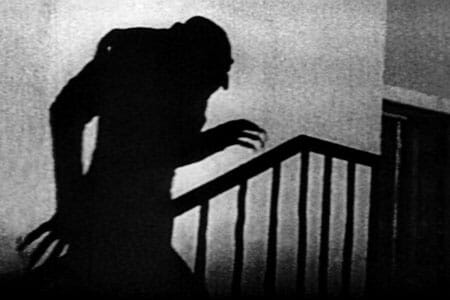
What can you say about a film that not only serves as an essential architect of a young medium’s development but also remains terrifying more than 90 years after the fact? Indeed, F.W. Murnau’s Nosferatu didn’t just help birth the cinematic horror movie, it revolutionized the ways one could tell a story through film. And to think this version only exists because Bram Stoker’s widow refused to grant permission for the studio’s planned adaptation of Dracula, thus forcing Murnau to reconceive Dracula as the more monstrous Count Orlok. Delivering one of the most memorable turns in cinema history, actor Max Schreck, with his grotesque makeup job and reptilian body movements, thoroughly embodies one of the most nightmarish images ever to grace the screen. There’s nothing romantic, sensual or charming about his Orlok; rather, the character connotes simple, unadulterated horror. Moreover, when film was still considered little more than a gimmick, it was productions like Nosferatu that would help elevate the rough new medium to the status of a genuine art form. So long as people continue to document history, the image of Schreck’s Orlok rising from his coffin will undoubtedly be among the first definitive images in the story of film. Watching Murnau’s masterpiece today, one can still be frightened by its set pieces, awed by its technical wizardry and become emotionally invested in a cast of long-deceased actors flailing about in fright. Nosferatu, in many ways, represents the beauty of cinema in its purest form. —Mark Rozeman







































